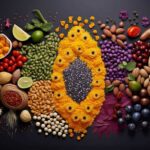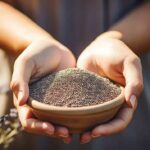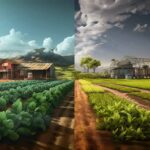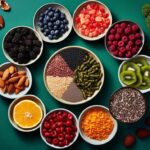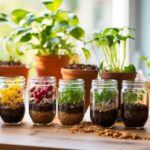Commercial Production of Chia Seeds
14 Essential Steps for Successful Commercial Chia Farming

Are you prepared to embark on a successful venture in commercial chia farming? Look no further!
In this article, we will guide you through the 14 essential steps that will pave the way to chia farming success.
From selecting the right seed varieties to implementing proper irrigation systems, we’ve got you covered.
Get ready to revolutionize your chia farming practices and unlock the potential for abundant harvests.
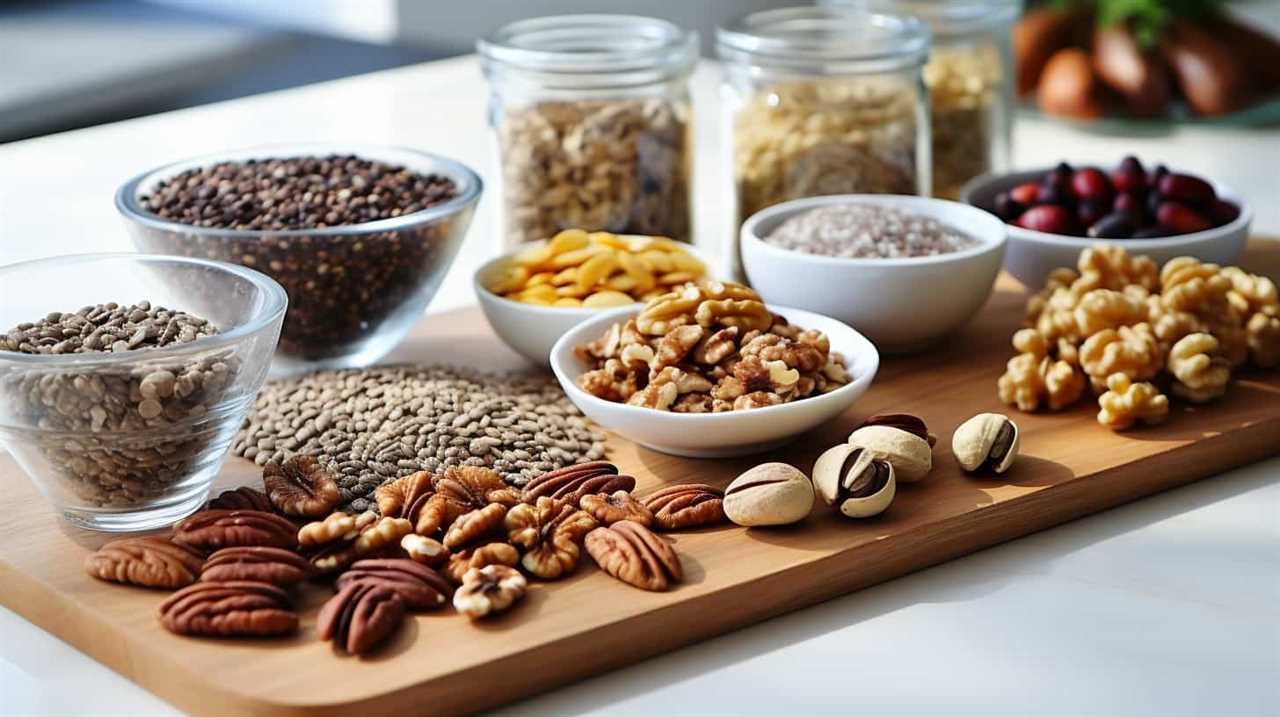
Let’s embark on this journey together towards liberation in the world of chia farming.
Key Takeaways
- Chia seed selection should prioritize high germination rates and disease resistance.
- Soil testing is crucial to assess the suitability of the soil for chia cultivation and determine nutrient requirements.
- Efficient irrigation systems and effective weed and pest control strategies are essential for successful chia farming.
- Proper harvesting, storage, and distribution methods are important to maintain the quality of chia seeds for long-term use.
Selecting the Right Chia Seed Varieties
We carefully evaluate various chia seed varieties to choose the most suitable ones for our commercial farming operation. Chia seed selection is a crucial step in ensuring the success of our chia farming venture. We prioritize chia seed quality, as it directly impacts the yield and overall productivity of our crops. Through rigorous testing and analysis, we assess factors such as seed size, color, texture, and nutritional content. Our goal is to select chia seeds that exhibit high germination rates, strong disease resistance, and optimal growth characteristics.
By selecting the best chia seed varieties, we can maximize the potential of our chia farming operation and provide our audience with the highest quality chia products.
Now that we’ve chosen the right chia seeds, the next step is preparing the soil for chia planting.

Preparing the Soil for Chia Planting
Before planting chia, it’s crucial to conduct soil testing to determine its suitability for chia cultivation. This involves assessing the soil’s pH levels, nutrient content, and overall fertility.
Based on the results, we can then determine the specific nutrient requirements for chia and develop a soil preparation plan that includes techniques such as tilling, composting, or adding organic matter to optimize soil conditions for successful chia growth.
Soil Testing for Chia
Conducting thorough soil testing is essential for preparing the soil for chia planting. Soil fertility and nutrient analysis are crucial factors to consider in optimizing chia crop yield.
By assessing the soil’s nutrient profile, farmers can determine the necessary amendments and fertilizers needed to create an ideal environment for chia cultivation. Soil testing allows for the identification of any deficiencies or imbalances in essential elements such as nitrogen, phosphorus, and potassium.
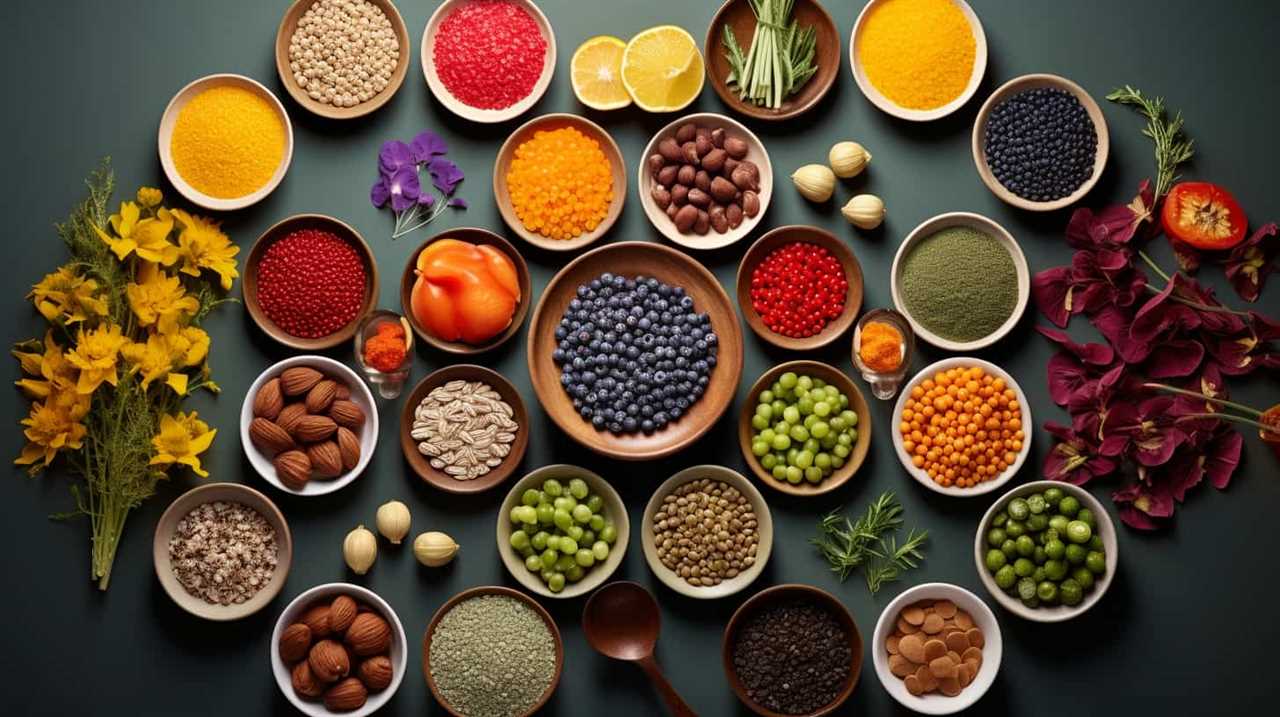
This information enables farmers to tailor their fertilization practices accordingly, ensuring that the chia plants receive the appropriate nutrients at each growth stage. Additionally, soil testing helps prevent excessive fertilizer application, reducing environmental impact and production costs.
Nutrient Requirements for Chia
To optimize chia crop yield, we must consider the nutrient requirements for chia and prepare the soil accordingly. Nutrient management plays a crucial role in ensuring successful chia seed germination and healthy plant growth.
Chia plants have specific nutrient needs, including nitrogen (N), phosphorus (P), and potassium (K), along with secondary nutrients and micronutrients. Conducting a soil test is essential to assess the soil’s nutrient content and pH level. Based on the results, appropriate fertilizers can be applied to meet the specific nutrient requirements.
Nitrogen promotes leaf and stem growth, while phosphorus aids in root development and flowering. Potassium helps improve overall plant health and disease resistance. It’s important to maintain a balanced nutrient supply to maximize chia crop yield and achieve desired liberation in commercial chia farming.
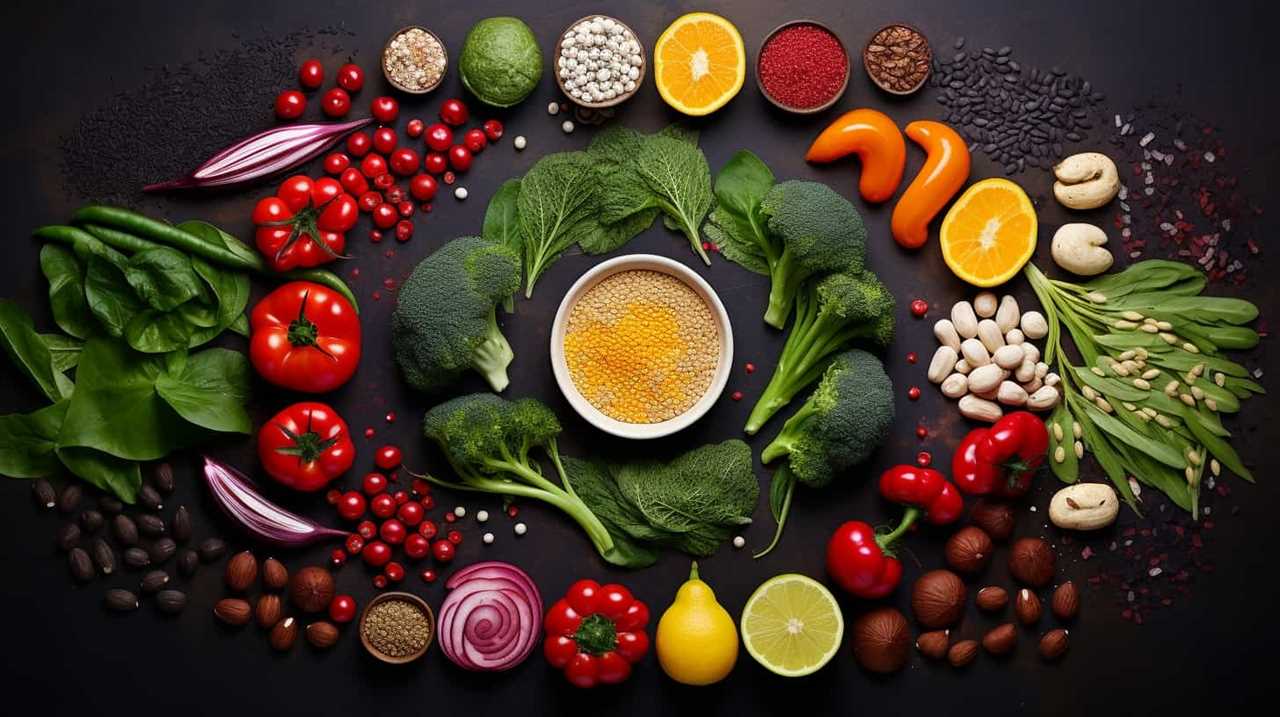
Soil Preparation Techniques
After assessing the nutrient requirements for chia, we begin preparing the soil for chia planting using specific techniques.
Adequate soil moisture is crucial for successful chia cultivation. To ensure optimal soil moisture levels, we employ the following techniques:
- Mulching: Applying organic mulch helps to retain soil moisture, reduce evaporation, and suppress weed growth.
- Irrigation: Implementing an efficient irrigation system ensures that chia plants receive the necessary water to thrive.
- Crop rotation: Rotating chia crops with other plants helps maintain soil health and prevent nutrient depletion.
By implementing these techniques, we can create an ideal environment for chia planting, maximizing yield and promoting sustainable farming practices.
Proper soil preparation is essential for chia cultivation success, allowing for the liberation of a bountiful harvest and the freedom to explore the potential of commercial chia farming.

Implementing Proper Irrigation Systems
We regularly maintain and operate efficient irrigation systems on our commercial chia farm. Implementing proper irrigation systems is crucial for efficient water usage and reducing water wastage.
By using advanced technology and monitoring tools, we’re able to optimize water distribution, ensuring that each plant receives the appropriate amount of water. Our irrigation systems are designed to deliver water directly to the root zone, minimizing evaporation and runoff.
We’ve also implemented smart controllers that adjust watering schedules based on weather conditions and plant needs. Additionally, we regularly inspect and maintain our irrigation infrastructure to prevent leaks and other inefficiencies.
Through these measures, we’re able to maximize water efficiency and minimize water wastage, contributing to the overall sustainability of our chia farming operations.
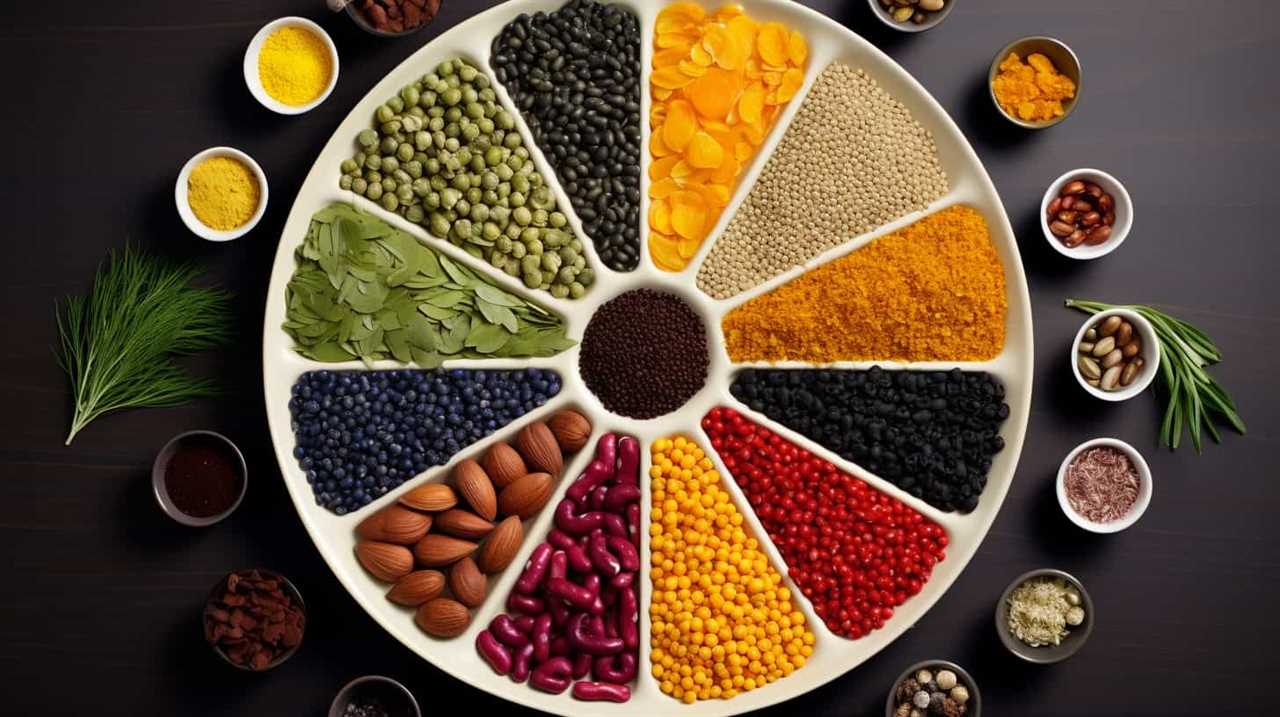
Controlling Weeds and Pests in Chia Fields
When it comes to controlling weeds and pests in chia fields, effective weed management is crucial for maintaining the health and productivity of the crop. Implementing strategies such as regular monitoring, proper crop rotation, and targeted herbicide application can help minimize weed growth and competition.
Additionally, adopting integrated pest management techniques, including biological control and cultural practices, can help prevent pest infestations and reduce the reliance on chemical pesticides, ensuring the overall health and sustainability of the chia crop.
Effective Weed Management
One important step in successful commercial chia farming is implementing effective weed management strategies to control weeds and pests in chia fields. To ensure the health and productivity of chia crops, it’s crucial to employ various weed control methods and embrace organic weed management practices.
Here are three key strategies that can help achieve effective weed management:
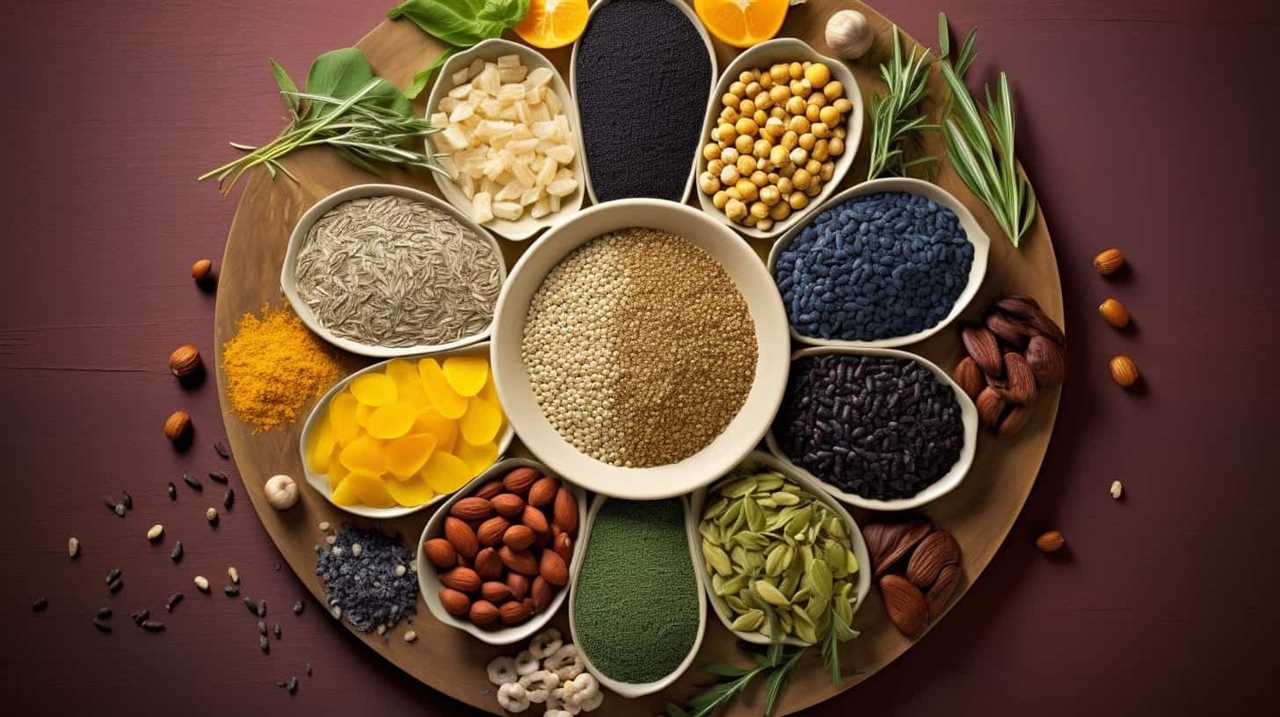
- Mulching: Applying organic mulch, such as straw or wood chips, helps suppress weed growth by preventing sunlight from reaching weed seeds, thus inhibiting their germination.
- Crop rotation: Rotating chia cultivation with other crops can disrupt the life cycle of weeds, reducing their population and preventing the buildup of weed pressure.
- Hand weeding: Regular manual removal of weeds is essential, especially during the early stages of chia growth. This method allows for precise weed removal without harming the chia plants.
Pest Control Strategies
To effectively control weeds and pests in chia fields, it’s important for commercial chia farmers to implement strategic pest control strategies. Integrated pest management (IPM) is a holistic approach that combines different pest control tactics to reduce the reliance on synthetic pesticides.
This method focuses on preventing pest outbreaks by promoting natural pest control mechanisms. One key aspect of IPM is the use of biological control agents, such as beneficial insects, to prey on pests and keep their populations in check.
Additionally, farmers can employ cultural practices like crop rotation and intercropping to disrupt pest life cycles and create an unfavorable environment for weeds.
Regular scouting and monitoring of fields are essential to identify pest and weed infestations early on, allowing for timely intervention.
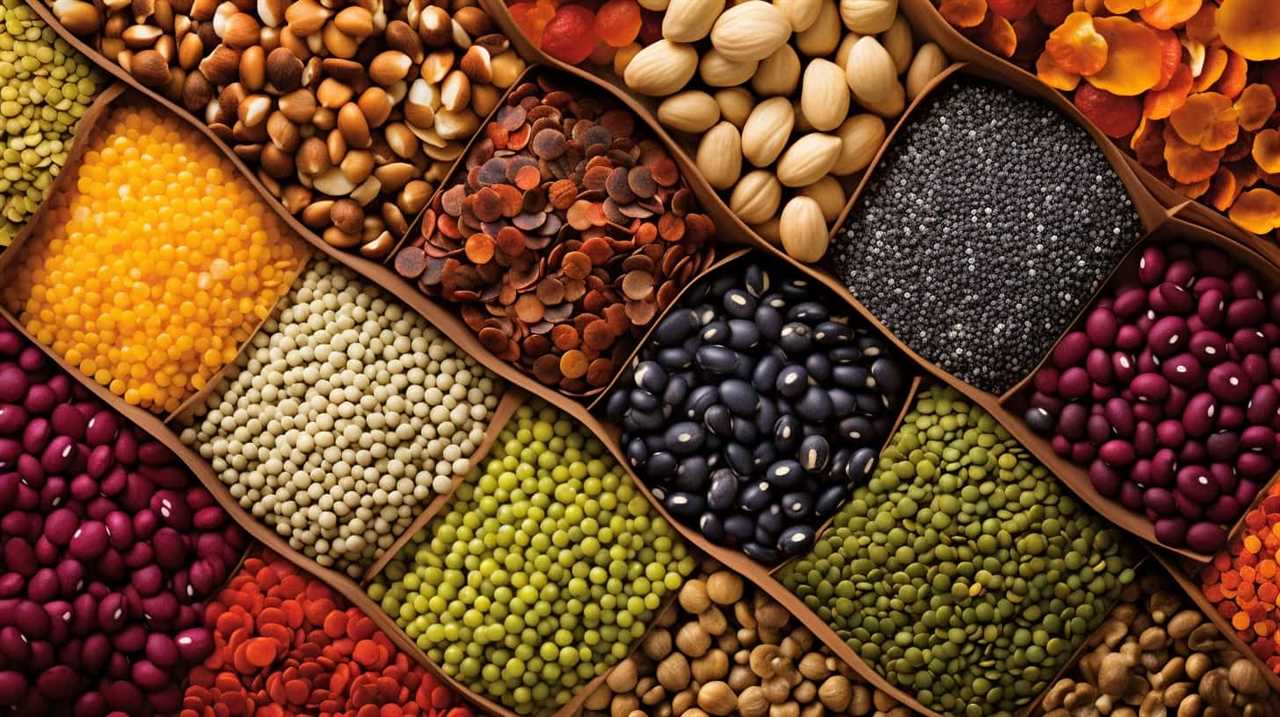
Ensuring Crop Health
To ensure the health of our chia crops and effectively control weeds and pests in our fields, we implement strategic pest control strategies. Here are some key methods we employ:
- Crop rotation: By rotating chia crops with other plants, we can disrupt the life cycles of pests and prevent the build-up of specific weed and pest populations.
- Beneficial insects: We introduce beneficial insects, such as ladybugs and lacewings, which naturally prey on pests, reducing the need for chemical interventions.
- Soil fertility management: Maintaining optimal soil fertility is crucial for crop health. We regularly test our soil and amend it with organic matter and appropriate fertilizers to promote plant vigor and resilience.
Implementing these strategies not only helps us control weeds and pests effectively but also improves soil fertility, ensuring the long-term health and productivity of our chia fields.
Now, let’s delve into the importance of establishing a crop rotation plan.
Establishing a Crop Rotation Plan
The first step in establishing a crop rotation plan for successful commercial chia farming is to assess the soil quality and nutrient needs of the crops. This is crucial because crop rotation benefits the soil by preventing nutrient depletion and reducing pest and disease pressure.
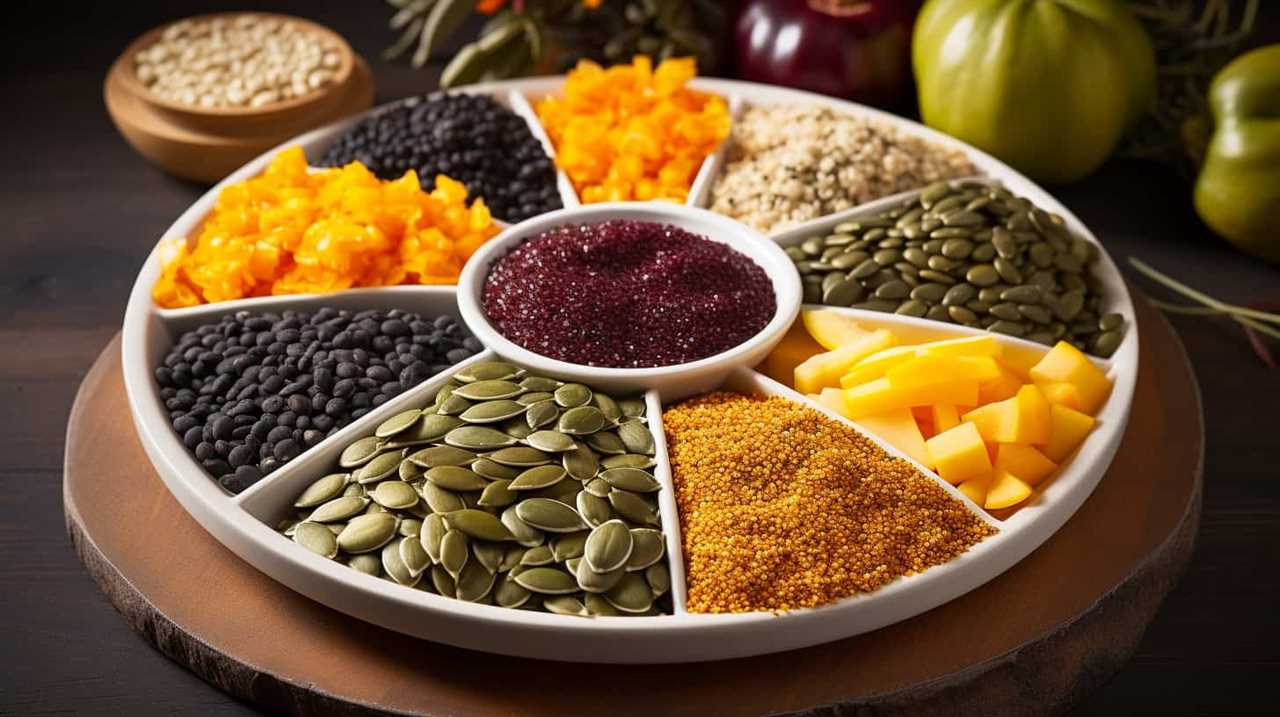
To begin, soil testing should be conducted to determine the levels of essential nutrients and pH balance. Based on the results, appropriate fertilizers can be applied to address any deficiencies. Additionally, it’s important to consider the specific nutrient requirements of chia plants and select companion crops that complement their needs.
Crop rotation techniques such as alternating between legumes and non-legumes or incorporating cover crops can improve soil structure and fertility.
Sowing Chia Seeds at the Right Time
When it comes to sowing chia seeds at the right time, there are a few key points to consider.
First, identifying the optimal sowing season is crucial for achieving the best results. This involves understanding the climatic conditions and temperature requirements for chia cultivation.
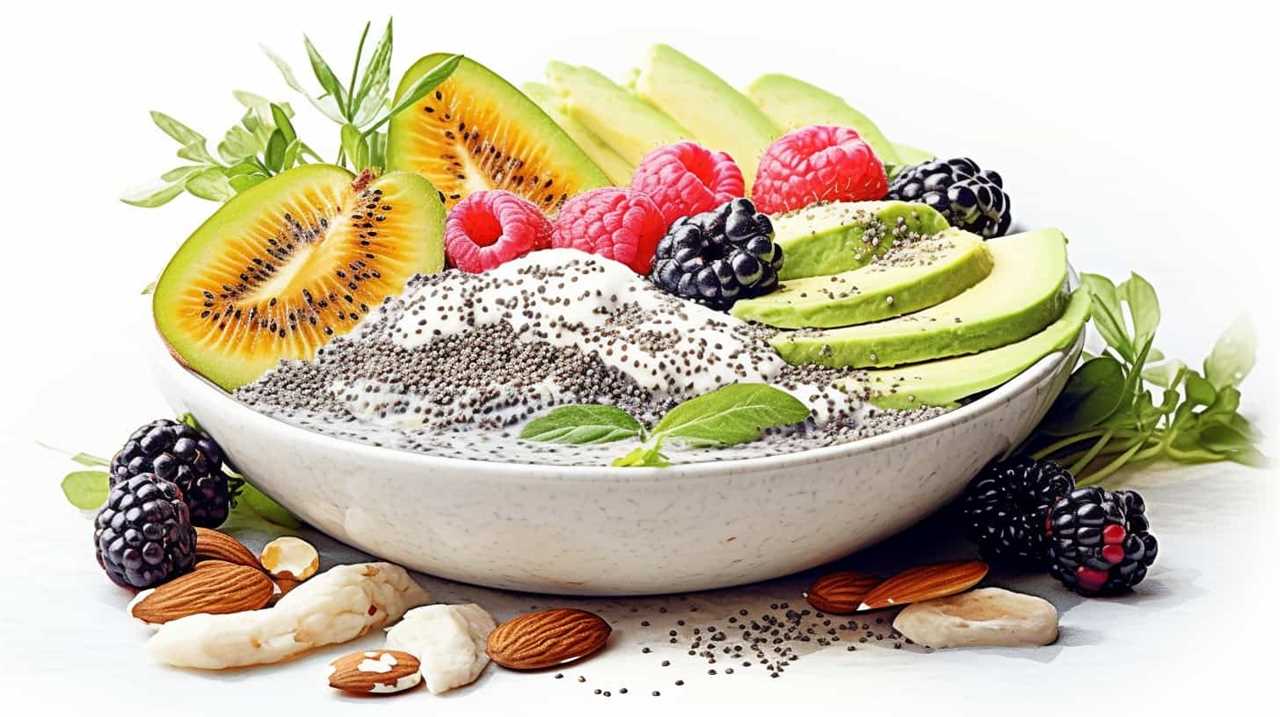
Optimal Sowing Season
We always find it crucial to sow chia seeds at the right time for optimal growth and yield in our commercial chia farming operations. Choosing the best time to sow chia seeds is essential for ensuring the success of the crop. Here are three key factors to consider when determining the optimal sowing season:
- Climate conditions: Chia thrives in warm and dry weather conditions, so it’s important to sow the seeds during a period when the climate is favorable for their growth.
- Soil temperature: Chia seeds require a soil temperature of at least 60°F (15°C) for germination. Sowing the seeds when the soil has reached this optimal temperature will promote healthy seedling development.
- Daylight hours: Chia plants are highly responsive to the length of daylight hours. Sowing the seeds when the days are longer can lead to better growth and yield.
Timing for Best Results
To ensure optimal growth and yield in our commercial chia farming operations, it is crucial for us to carefully consider the timing for sowing chia seeds. The best sowing techniques involve planting the seeds during the ideal planting season, which varies depending on the region and climate. Timing is important because it determines the success of germination and establishment of the chia plants. A well-planned planting schedule ensures that the seeds have enough time to grow and mature before the onset of adverse weather conditions or pests. To illustrate the importance of timing, consider the table below which shows the recommended planting seasons for chia in different regions:
| Region | Ideal Planting Season |
|---|---|
| North America | Spring |
| South America | Fall |
| Europe | Spring or Fall |
| Asia | Spring |
| Australia | Spring |
Managing Fertilizer Application for Chia Plants
For successful commercial chia farming, proper management of fertilizer application is crucial. To achieve optimal results, consider the following strategies for fertilizer management:
- Soil testing: Conduct regular soil tests to determine the nutrient content and pH levels of your soil. This will help you identify any deficiencies or imbalances that need to be addressed.
- Nutrient optimization: Based on the soil test results, develop a fertilizer plan that focuses on providing the necessary nutrients for chia plants. Consider using organic fertilizers or incorporating nutrient-rich cover crops to improve soil fertility.
- Timing and application: Apply fertilizers at the right time to ensure maximum uptake by the plants. Consider factors such as crop growth stage, weather conditions, and irrigation practices when determining the timing and method of fertilizer application.
Monitoring and Adjusting Soil Ph Levels
Monitoring and adjusting soil pH levels is an essential task in successful commercial chia farming. The pH level of the soil directly affects the availability of essential nutrients to chia plants. To ensure optimal growth and productivity, chia farmers must regularly monitor and adjust the pH levels of their fields. This can be achieved through soil pH testing, which determines the acidity or alkalinity of the soil. Adjusting pH levels involves adding soil amendments such as lime to raise pH or sulfur to lower pH. The following table outlines the ideal pH range for chia cultivation:

| pH Level | Soil Acidity/Alkalinity |
|---|---|
| <6.0 | Acidic |
| 6.0-7.5 | Neutral |
| >7.5 | Alkaline |
Ensuring Adequate Drainage for Chia Fields
We prioritize ensuring adequate drainage for our chia fields to maintain optimal growing conditions. Proper drainage is vital for improving soil moisture and preventing waterlogging, which can lead to root rot and hinder the growth of chia plants.
To achieve this, we employ the following measures:
- Implementing a well-designed irrigation system that allows for efficient water distribution and excess water removal.
- Conducting regular soil tests to assess soil moisture levels and identify any drainage issues.
- Enhancing soil structure by incorporating organic matter, such as compost or mulch, to improve water infiltration and drainage.
Properly Harvesting Chia Seed Pods
When it comes to properly harvesting chia seed pods, there are several key points that need to be considered.
First and foremost, optimal harvesting techniques must be employed to ensure the highest quality seeds are obtained.
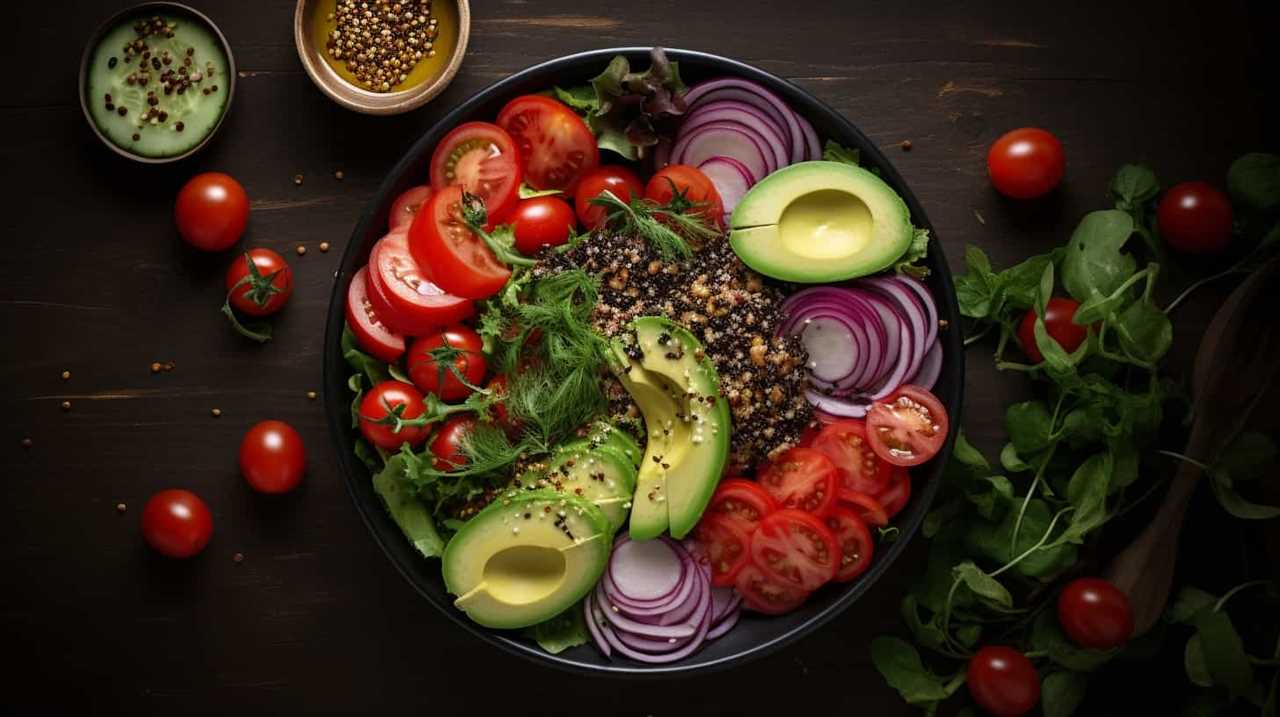
Additionally, proper storage and distribution methods are crucial to maintain the integrity and freshness of the chia seeds, ultimately maximizing their market value.
Optimal Harvesting Techniques
Properly harvesting chia seed pods requires implementing efficient techniques that maximize seed extraction. To ensure optimal harvesting, consider the following techniques:
- Selective harvesting: Harvest mature seed pods that have turned a dark color, as they contain fully developed seeds ready for extraction.
- Hand harvesting: Utilize manual labor to carefully pluck the seed pods from the chia plants, ensuring minimal damage to both the pods and the seeds.
- Timely harvesting: Harvest the chia seed pods at the right moment to prevent shattering and loss of seeds, maximizing the overall yield.
By employing these techniques, farmers can maximize their chia seed extraction and ultimately enhance their profitability.
Storage and Distribution Methods
To ensure efficient storage and distribution of properly harvested chia seed pods, we implement strategic methods that maintain seed quality and maximize marketability.
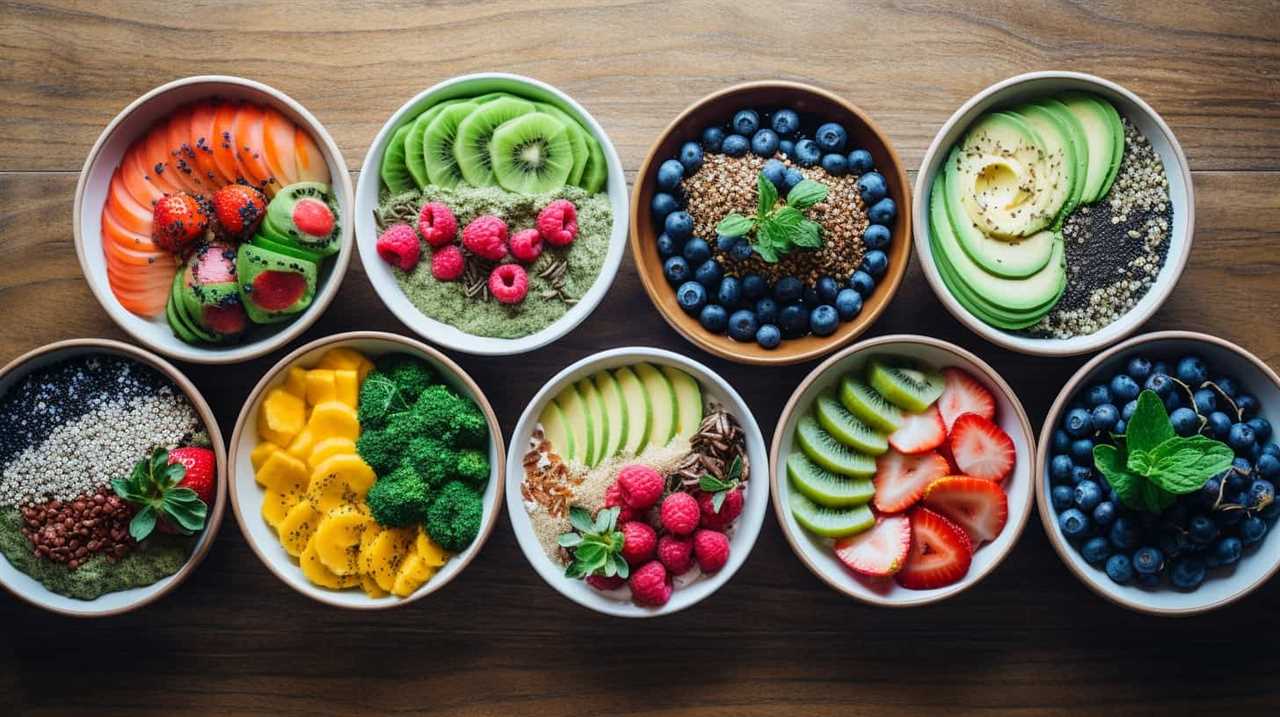
When it comes to storage methods, we prioritize cleanliness and moisture control. Chia seed pods should be stored in a cool, dry environment to prevent moisture buildup, which can lead to mold and spoilage. Vacuum-sealed bags or airtight containers are ideal for preserving the freshness and nutritional value of the seeds.
Additionally, we employ distribution strategies that focus on timely delivery and careful handling. Chia seed pods are delicate and prone to breakage, so proper packaging and handling are crucial to avoid damage during transportation.
Drying and Cleaning Chia Seeds
To effectively dry and clean chia seeds, we must follow a specific process. The drying techniques and cleaning methods used are crucial in maintaining the quality and purity of the seeds. Here are three essential steps to ensure successful drying and cleaning:
- Step 1: Pre-drying – Before initiating the drying process, it’s important to remove any impurities or foreign matter from the seeds. This can be done by manually inspecting and removing debris.
- Step 2: Drying – Proper drying is essential to prevent mold growth and ensure longer shelf life. Chia seeds can be dried using various methods such as air drying, sun drying, or using a dehydrator. The ideal moisture content should be around 6-8%.
- Step 3: Cleaning – After the drying process, it’s crucial to remove any remaining impurities or unwanted particles. This can be achieved by sieving the seeds or using specialized cleaning equipment.
Storing Chia Seeds for Long-Term Use
Now that we’ve successfully dried and cleaned the chia seeds, how can we store them for long-term use?
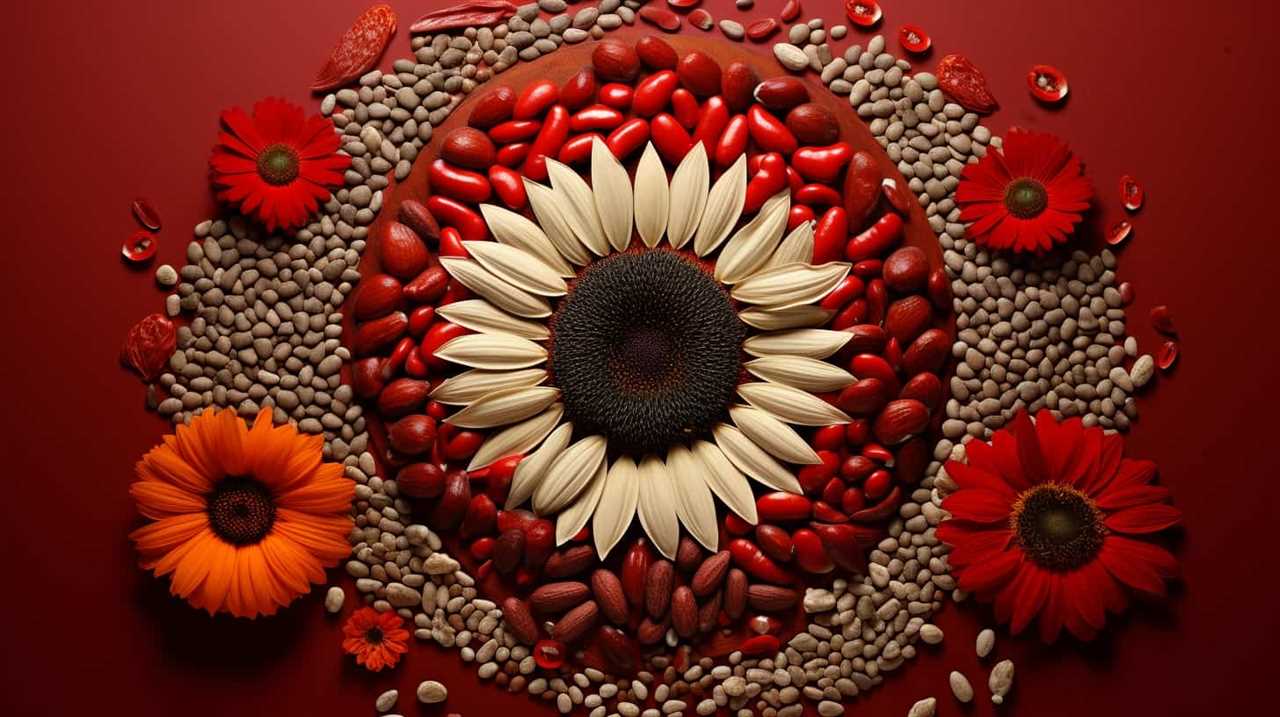
To ensure the preservation of chia seed quality over extended periods, it’s crucial to employ effective long-term storage techniques. Firstly, selecting the right containers is essential. Opt for airtight containers made of food-grade materials to prevent moisture and oxygen from degrading the seeds. Additionally, store the containers in a cool, dark place to maintain optimal conditions.
It’s important to regularly check for any signs of spoilage, such as mold or an off smell, and discard any compromised seeds immediately. By following these long-term storage techniques, we can safeguard the quality of our chia seeds for future use.
Transitioning now to the subsequent section on marketing and selling chia seeds, let’s explore the strategies for maximizing our profits.
Marketing and Selling Chia Seeds
We actively promote and sell our high-quality chia seeds to maximize profits in our commercial chia farming business.

To effectively market and sell our chia seeds, we employ various marketing strategies tailored to our target audience. Our marketing strategies include:
- Online presence: We leverage social media platforms and our website to showcase the benefits and versatility of our chia seeds. We engage with our audience through informative content, customer testimonials, and visually appealing images.
- Collaborations: We collaborate with health and wellness influencers, nutritionists, and fitness experts to endorse our chia seeds and increase brand visibility.
- Trade shows and events: We actively participate in trade shows and events within the health and wellness industry to connect with potential buyers and establish partnerships.
Continuously Improving Chia Farming Practices
As chia farmers, we constantly strive to enhance our farming practices to ensure optimal yields and quality of our chia crops.
One crucial aspect of continuously improving chia farming practices is focusing on improving seed quality. This can be achieved through careful selection of high-quality seeds, implementing proper storage techniques, and regularly testing seeds for germination rates and purity.
By incorporating these measures, we can ensure that our chia crops are of the highest quality, which in turn enhances their market value and customer satisfaction.
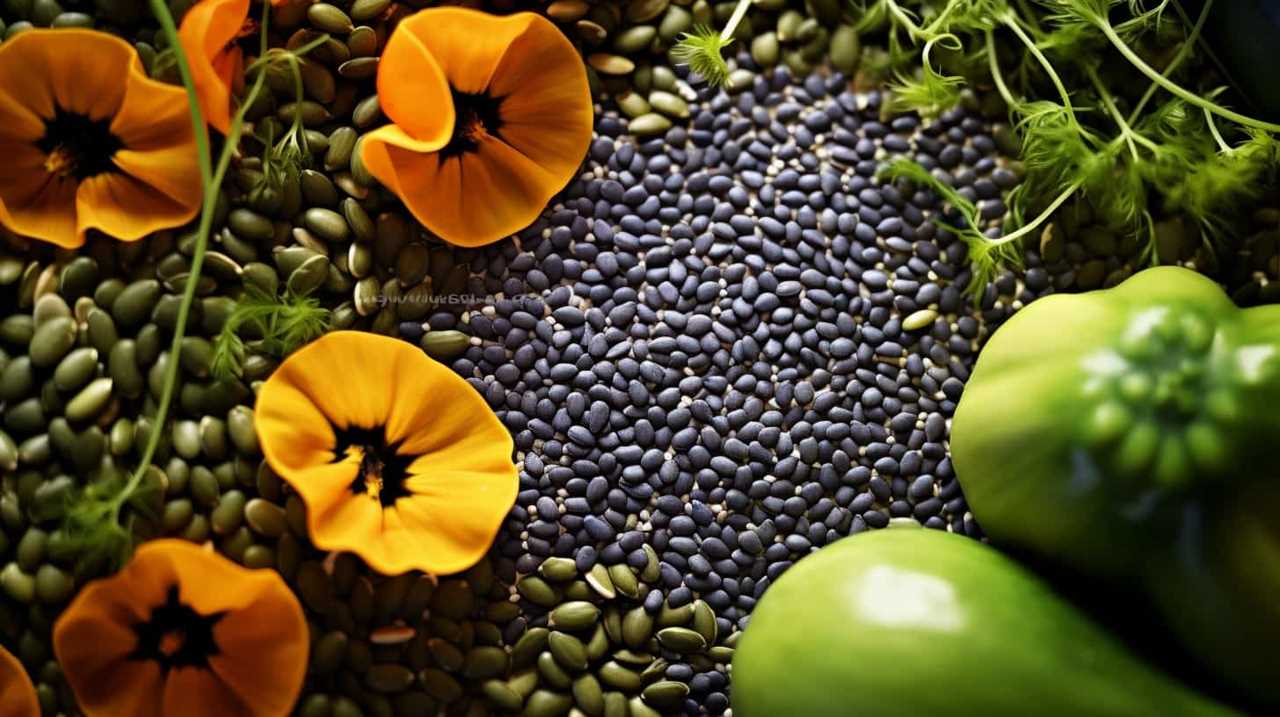
Additionally, another key factor in continuously improving chia farming practices is optimizing yield potential. This involves implementing efficient irrigation systems, adopting appropriate planting techniques, and regularly monitoring and managing pests and diseases.
Conclusion
In conclusion, successful commercial chia farming requires careful selection of seed varieties, proper soil preparation, efficient irrigation systems, effective weed and pest control, and a well-planned crop rotation strategy.
Additionally, it’s crucial to ensure thorough drying and cleaning of chia seeds before storing them for long-term use.
Marketing and selling the seeds play a vital role in the success of the venture.

By continuously improving farming practices, farmers can maximize their chia production and thrive in this lucrative industry.
Like a well-nurtured seed, commercial chia farming can yield bountiful rewards.
Hi, I’m Sarah. I write for Turtle Tree Seeds, a news blog that loves food – all kinds of food. But especially bacon, chocolate, and veggies. We’re on a mission to show the world that you can enjoy all of those things, even kale and brussels sprouts. Because we believe that when it comes to food, there’s no such thing as guilty pleasures. Just pleasures.
I’m also a huge fan of puns (obviously).
Commercial Production of Chia Seeds
11 Profitable Tips for Commercial Seed Farming

Are you ready to take your agricultural seed business to the next level?
We’ve got you covered with our 11 profitable tips that will revolutionize your chia seed cultivation.
From selecting the right varieties to optimizing soil conditions, implementing effective irrigation techniques to managing pests and diseases, we’ve got all the technical know-how you need.
Get ready to maximize your crop yield, develop a killer marketing strategy, and stay ahead of industry trends.
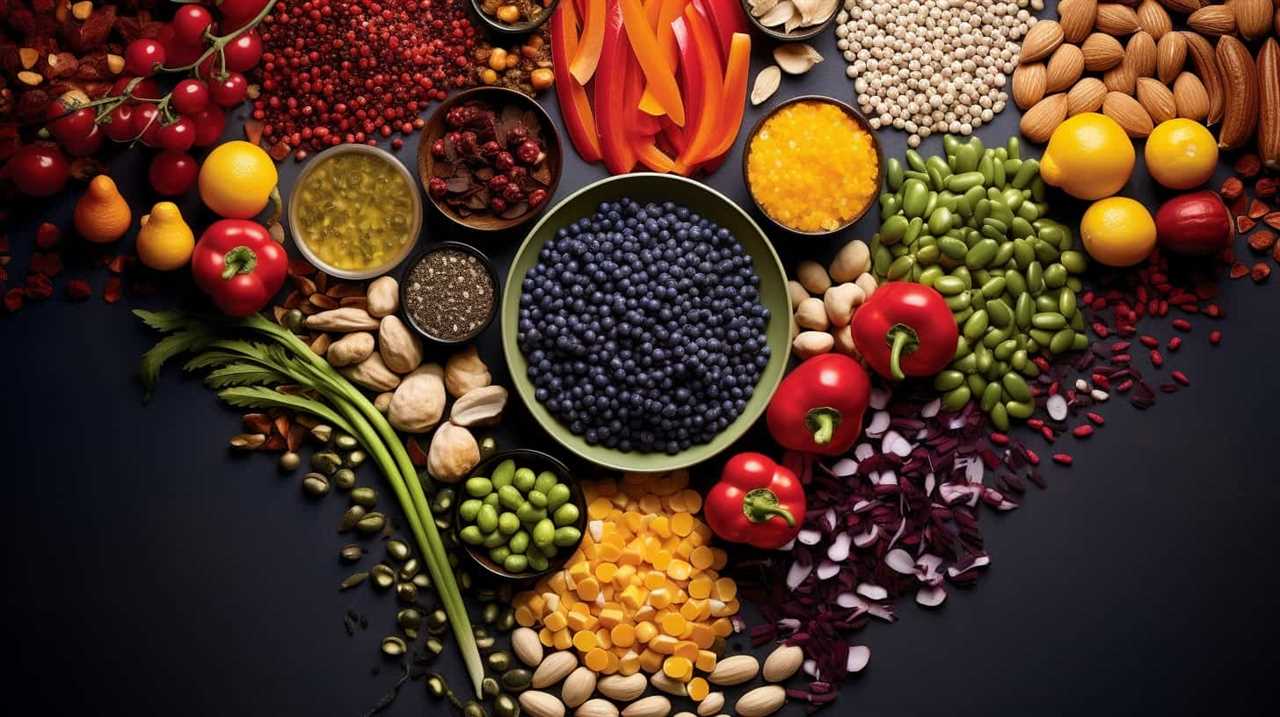
Let’s liberate your seed farming success together.
Key Takeaways
- Choose chia seed varieties with high germination rates, disease resistance, and adaptability to different climates for successful seed development and profitable yields.
- Proper soil nutrient management and fertilization are essential for maximizing chia seed quality and yield.
- Implement efficient irrigation techniques, such as drip irrigation or sprinklers, and proper soil moisture management to optimize water usage and prevent under or over-watering.
- Focus on proven strategies and techniques, including maximizing pollination rates, improving seed germination, and implementing pest and disease management practices, to maximize chia seed crop yield.
Selecting the Right Chia Seed Varieties
When it comes to chia seed breeding, it’s crucial to choose varieties that exhibit high germination rates and optimal growth characteristics. Germination is a critical stage in seed development, and selecting varieties with excellent germination potential ensures a higher success rate for your commercial seed farming venture.
Additionally, it’s essential to consider traits such as disease resistance, yield potential, and adaptability to different climatic conditions. By selecting chia seed varieties that possess these desirable qualities, we can maximize our chances of attaining profitable yields and maintaining a sustainable seed farming operation.
With the right chia seed varieties, we can now transition into the subsequent section about optimizing soil conditions for chia seed cultivation.
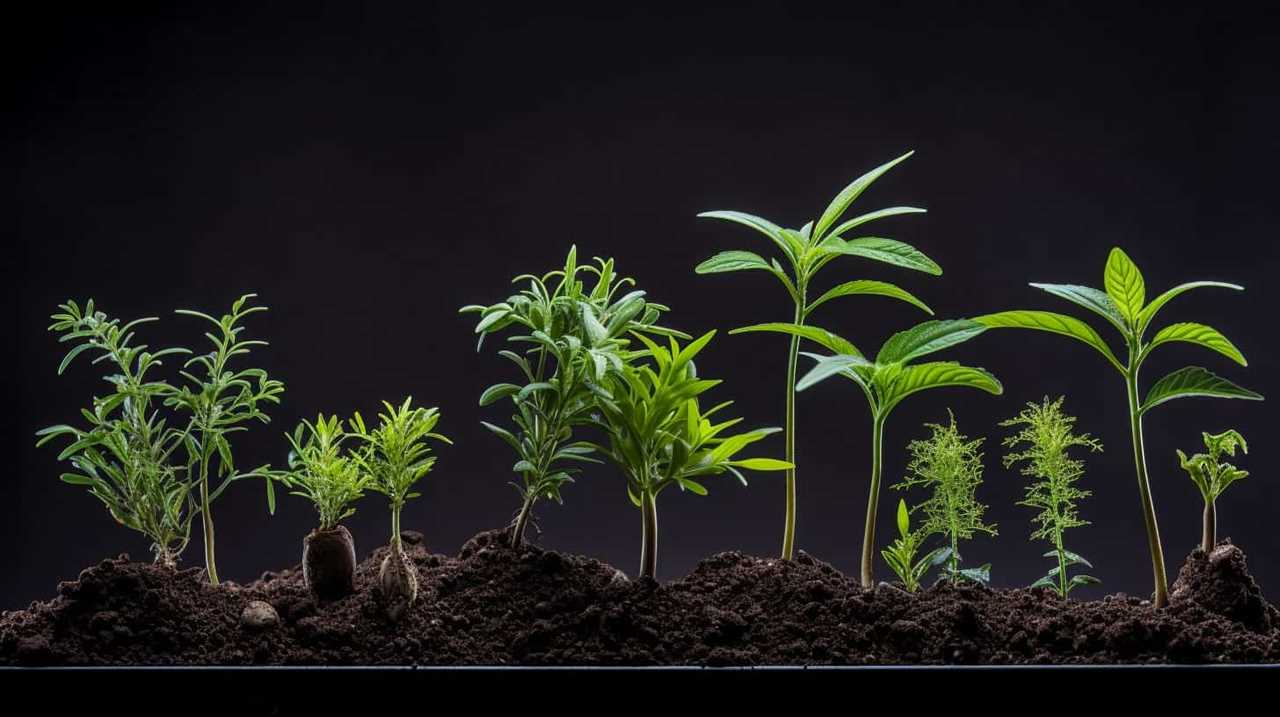
Optimizing Soil Conditions for Chia Seed Cultivation
To optimize soil conditions for chia seed cultivation, we must consider three key points: soil pH requirements, nutrient availability and uptake, and soil moisture management.
Chia plants thrive in a slightly acidic soil with a pH range of 6.0 to 7.5.
It’s crucial to ensure that essential nutrients are readily available and properly absorbed by the plants, which can be achieved through regular soil testing and appropriate fertilization.
Additionally, maintaining adequate soil moisture levels is essential for optimal chia seed production, as the plants require consistent moisture but not excessive waterlogging.
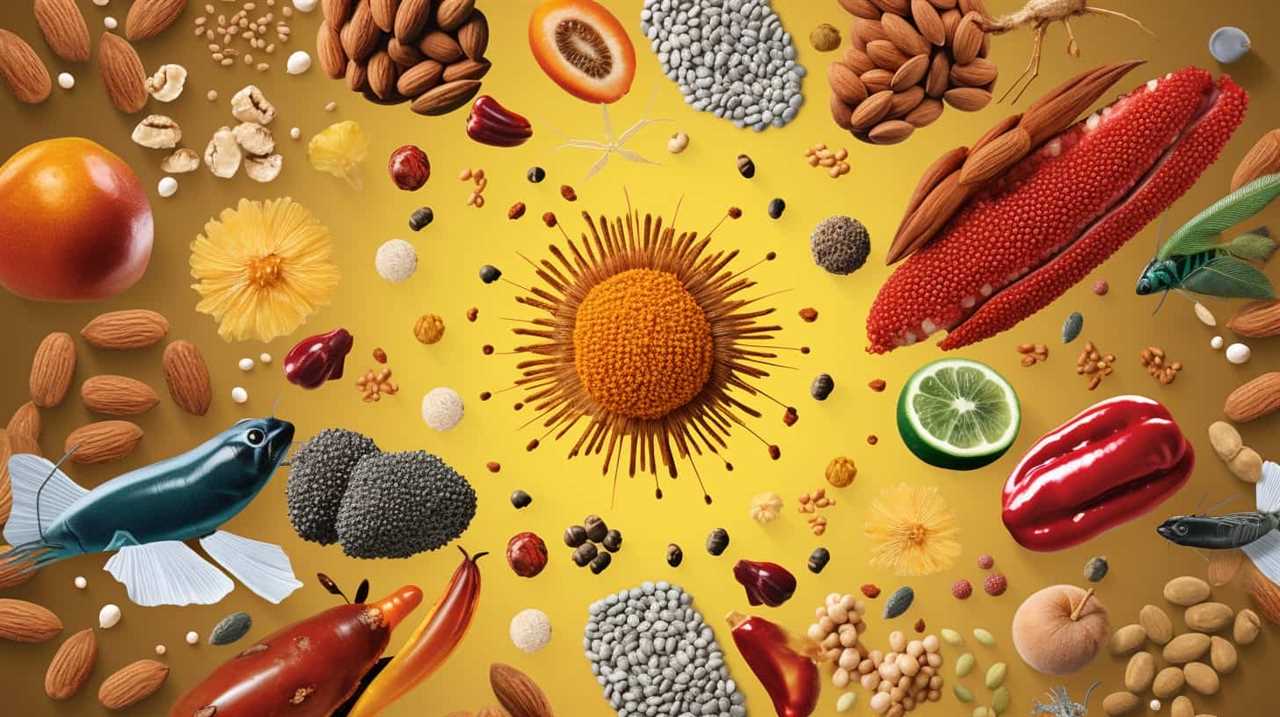
Soil Ph Requirements
We optimize soil conditions for chia seed cultivation by testing and adjusting the soil pH. Soil pH plays a crucial role in determining plant growth and nutrient availability. Chia plants thrive in slightly acidic to neutral soil, with a pH range of 6.0 to 7.5. To ensure optimum pH levels, we recommend conducting regular soil tests to assess the current pH and make necessary amendments. Soil amendments, such as lime or sulfur, can be added to raise or lower the pH respectively. Maintaining the ideal pH level enhances nutrient uptake, promotes healthy root development, and ultimately leads to higher chia seed yields. By understanding the importance of soil testing and implementing necessary amendments, we can create optimal soil conditions for successful chia seed cultivation.
| Soil pH Level | Soil Condition |
|---|---|
| < 6.0 | Acidic |
| 6.0 – 7.5 | Neutral |
| > 7.5 | Alkaline |
Nutrient Availability and Uptake
To optimize soil conditions for chia seed cultivation, we continue by focusing on nutrient availability and uptake, which are crucial factors for achieving successful and profitable commercial seed farming.
Nutrient deficiency prevention is essential to ensure healthy plant growth and maximize seed production. Conducting regular soil nutrient testing is an effective tool to assess the nutrient status of the soil and make informed decisions regarding fertilizer application.
By analyzing soil samples, farmers can determine the nutrient levels present in the soil and identify any deficiencies or imbalances. This enables them to tailor their fertilizer application to address specific nutrient requirements of chia plants.

Proper nutrient management increases nutrient availability in the soil, ensuring optimal uptake by the plants. By maintaining a balanced nutrient supply, farmers can enhance chia seed quality, yield, and profitability.
Soil Moisture Management
In the pursuit of optimizing soil conditions for chia seed cultivation, our focus turns to soil moisture management. Effective irrigation techniques play a crucial role in maintaining the ideal moisture levels for chia crops. To ensure liberation from crop infestations and maximize yield, here are some key points to consider:
- Proper scheduling of irrigation to avoid under or over-watering.
- Monitoring soil moisture levels regularly to make informed irrigation decisions.
- Utilizing efficient irrigation systems such as drip irrigation or sprinklers.
- Implementing mulching techniques to conserve soil moisture and suppress weed growth.
- Incorporating organic matter into the soil to improve water-holding capacity and drainage.
Implementing Effective Irrigation Techniques
When it comes to implementing effective irrigation techniques for commercial seed farming, there are several key points to consider.
First, water conservation strategies are essential for maximizing water efficiency and minimizing waste. This can include methods such as using drip irrigation systems that deliver water directly to the plant roots, reducing evaporation and runoff.
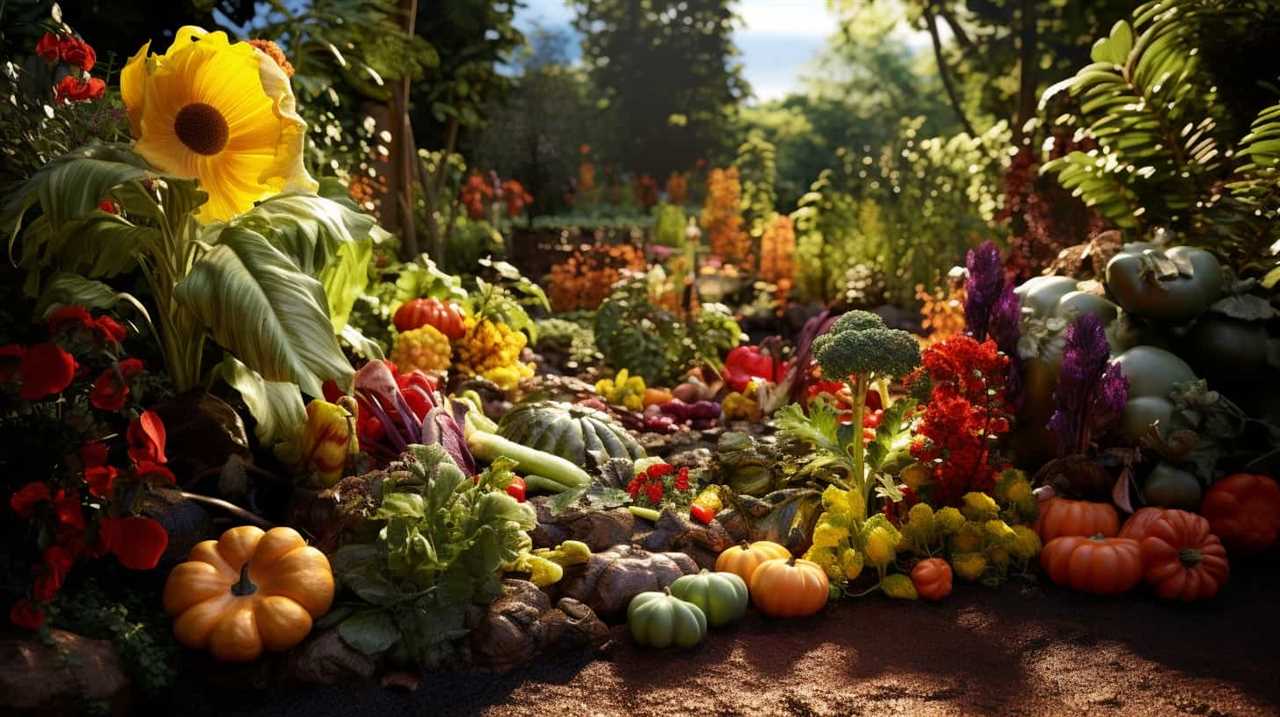
Additionally, proper soil moisture management is crucial to ensure that plants receive the right amount of water at the right time, avoiding both under and over-watering.
Water Conservation Strategies
How can we effectively implement irrigation techniques to conserve water on commercial seed farms? Water conservation is crucial for the long-term sustainability of seed farming.
Here are five innovative irrigation methods that can help save water and promote environmental liberation:
- Drip irrigation: Delivering water directly to the plant roots, reducing evaporation and water waste.
- Precision sprinklers: Using advanced technology to deliver water precisely to the plants, minimizing runoff and evaporation.
- Soil moisture sensors: Monitoring soil moisture levels to ensure water is applied only when necessary, preventing overwatering.
- Mulching: Applying organic materials to the soil surface to reduce evaporation and retain moisture.
- Crop rotation: Alternating crops to improve soil health and water retention capacity.
By implementing these water-saving techniques, commercial seed farms can conserve water, reduce costs, and contribute to a more sustainable agricultural industry.
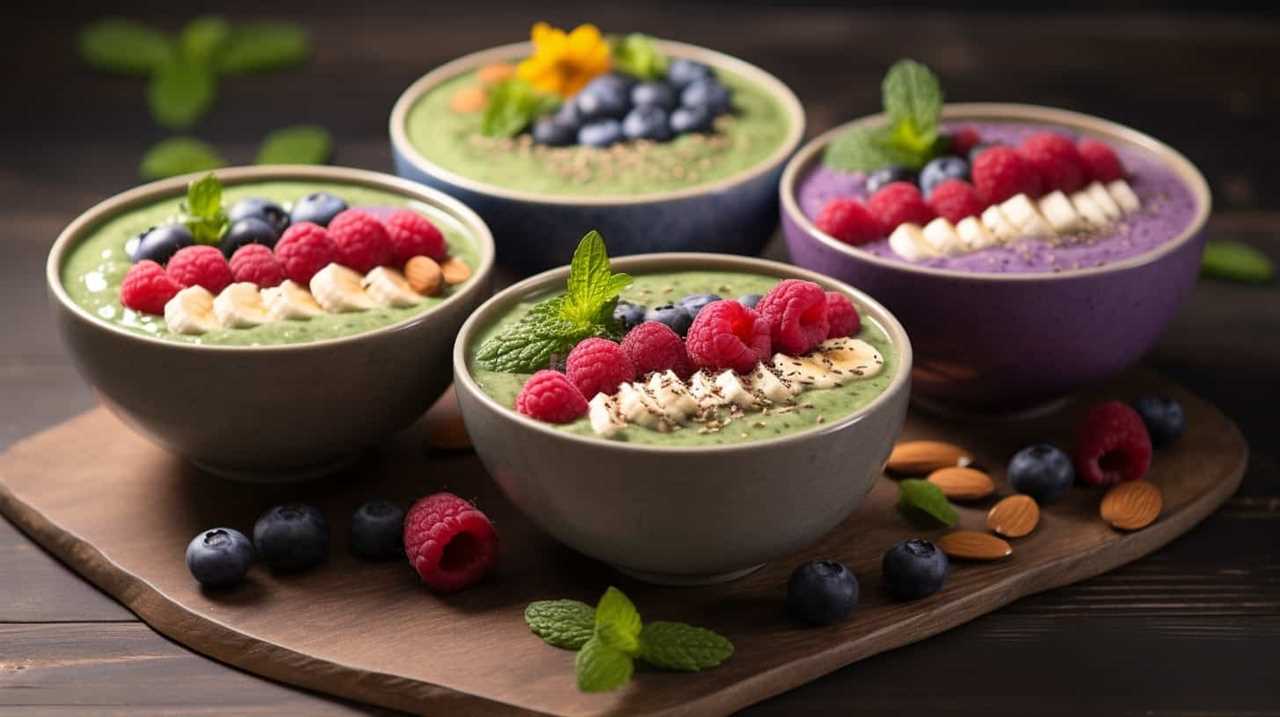
Now, let’s explore the benefits of drip irrigation in the subsequent section.
Drip Irrigation Benefits
We have found that implementing drip irrigation on commercial seed farms offers numerous benefits, including efficient water usage and improved plant health. Drip irrigation is a highly efficient irrigation system that delivers water directly to the root zone of plants, minimizing water loss due to evaporation or runoff. This method significantly reduces water wastage, making it a sustainable option for seed farmers. Additionally, drip irrigation promotes better plant health by ensuring a consistent supply of water and nutrients to the roots. This leads to stronger and more resilient plants, resulting in higher crop yields. The table below provides a comparison between drip irrigation and traditional sprinkler irrigation, highlighting the water efficiency of the former.
| Drip Irrigation | Sprinkler Irrigation | |
|---|---|---|
| Water Usage | Low | High |
| Water Loss due to Evaporation | Minimal | Significant |
| Water Loss due to Runoff | Minimal | Significant |
| Plant Health | Improved | Average |
| Crop Yield | High | Average |
Soil Moisture Management
To effectively manage soil moisture, we implement irrigation techniques that optimize water usage and promote plant health. Managing irrigation is crucial for successful seed farming, as it ensures the right amount of water reaches the crops at the right time. Here are five key practices for effective soil moisture management:
- Implement soil moisture monitoring systems to accurately assess moisture levels.
- Use drip irrigation to deliver water directly to the plant roots, reducing water loss through evaporation.
- Employ mulching techniques to conserve soil moisture by reducing evaporation and weed growth.
- Consider using automated irrigation systems to ensure precise water application based on crop needs.
- Implement proper scheduling to avoid over-irrigation, which can lead to waterlogging and nutrient leaching.
By implementing these techniques, farmers can optimize water usage, minimize water wastage, and promote healthy plant growth.
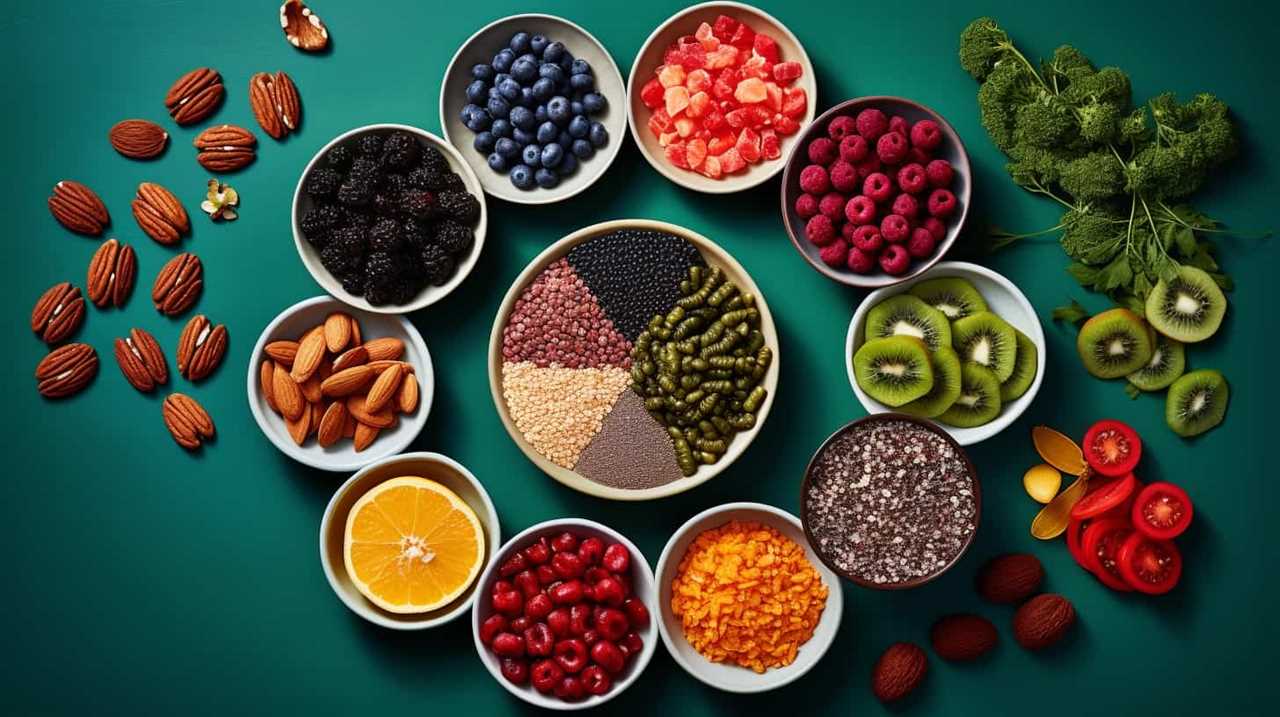
This lays the foundation for maximizing chia seed crop yield, as we’ll discuss in the next section.
Maximizing Chia Seed Crop Yield
To consistently achieve high chia seed crop yields, our commercial seed farming operation focuses on implementing proven strategies and techniques. Maximizing pollination rates and improving seed germination are key factors in achieving optimal chia seed crop yield.
To maximize pollination rates, we employ several methods. We ensure that there’s a sufficient population of pollinators, such as bees, in the area. We also provide them with a conducive environment by planting diverse flowering plants nearby. Additionally, we practice proper timing of planting to coincide with peak pollinator activity.
Improving seed germination is crucial for maximizing chia seed crop yield. We carefully select high-quality seeds and provide them with optimal conditions for germination, including proper soil moisture, temperature, and light exposure. We also conduct regular soil tests to ensure the soil is well-balanced and nutrient-rich, promoting healthy seed development.
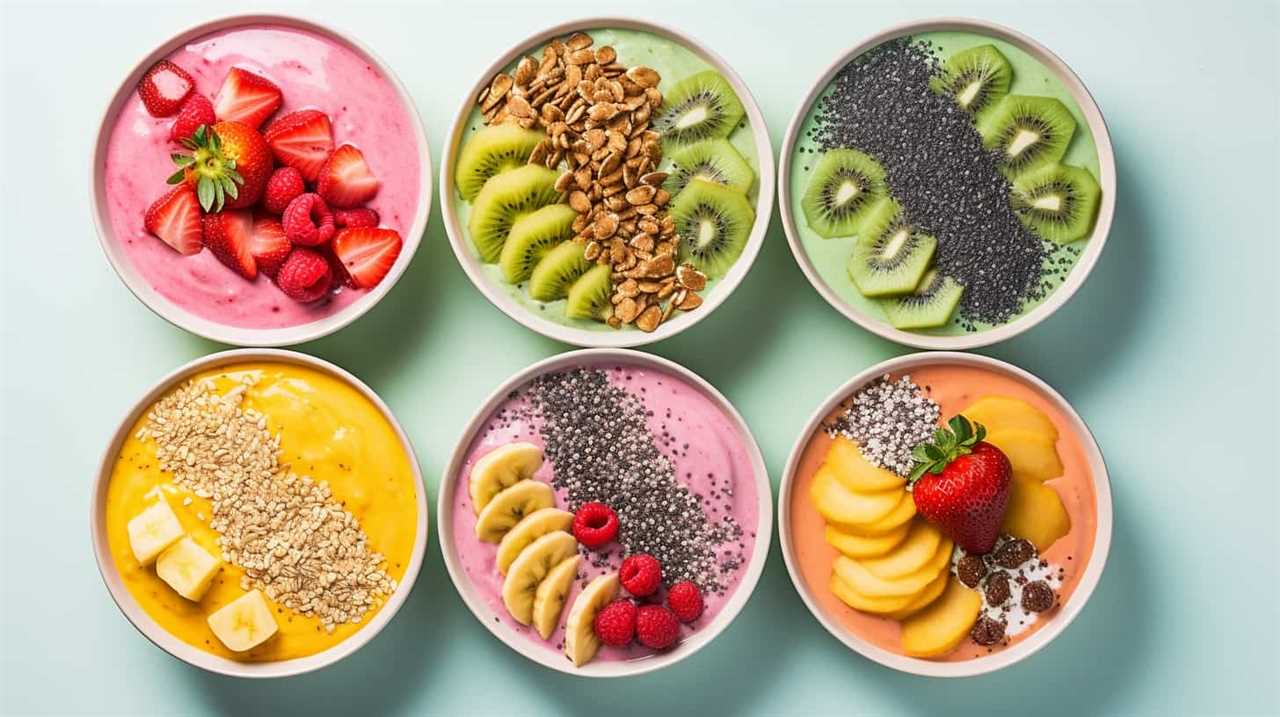
Managing Pests and Diseases in Chia Seed Farming
When it comes to managing pests and diseases in chia seed farming, prevention is key. By implementing proper crop management practices, such as regular field inspections and proper sanitation, we can prevent infestations from occurring in the first place.
Additionally, choosing disease-resistant chia varieties can greatly reduce the risk of plant diseases and minimize the need for chemical interventions.
Preventing Crop Infestations
At our commercial chia seed farm, we actively mitigate crop infestations by implementing effective pest and disease management strategies. To prevent crop infestations, we employ the following techniques:
- Crop rotation: By rotating the crops in our fields, we disrupt the life cycle of pests and diseases, reducing their population and preventing them from establishing a stronghold.
- Biological pest control: We introduce beneficial insects, such as ladybugs and lacewings, that prey on pests and keep their populations in check. This natural method eliminates the need for harmful chemical pesticides.
- Regular monitoring: We closely monitor our crops for any signs of pest or disease infestations. Early detection allows us to take prompt action and prevent the spread of infestations.
- Sanitation practices: We maintain clean farming practices by removing crop residues and weeds that could harbor pests and diseases. This helps create an unfavorable environment for infestations.
- Integrated pest management: We follow a comprehensive approach that combines various strategies, including cultural practices, biological controls, and targeted use of pesticides when necessary. This integrated approach ensures effective pest and disease management while minimizing the impact on the environment.
Disease-Resistant Chia Varieties
We prioritize disease-resistant chia varieties to effectively manage pests and diseases in our chia seed farming operations. By implementing chia seed cultivation techniques that focus on disease resistance, we can significantly reduce the risk of crop damage and ensure a higher yield. Disease-resistant chia varieties offer several benefits, including increased crop productivity, improved quality of chia seeds, and reduced reliance on chemical pesticides. These varieties are specifically bred to withstand common diseases and pests, making them more resilient and less prone to infestations. To highlight the advantages of disease-resistant chia varieties, the table below provides a comparison of their characteristics and benefits:
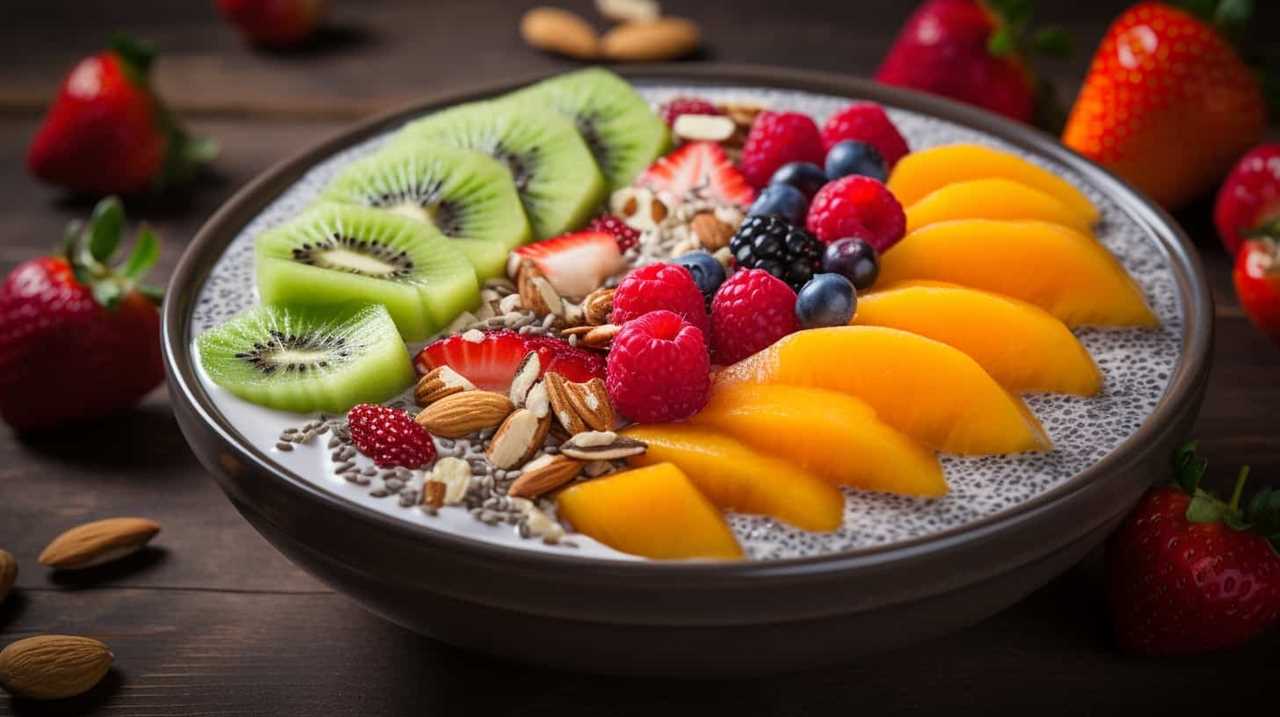
| Characteristics | Benefits |
|---|---|
| High disease resistance | Minimizes crop loss due to diseases |
| Increased yield potential | Improves profitability |
| Enhanced seed quality | Satisfies market demand for high-quality chia seeds |
| Reduced pesticide use | Environmentally-friendly farming practices |
| Long-term sustainability | Ensures consistent chia production for years to come |
Utilizing Organic Fertilizers for Higher Profits
To maximize profits in commercial seed farming, utilizing organic fertilizers is essential. Organic fertilizers, derived from natural sources, offer numerous advantages over chemical fertilizers. Here are five reasons why organic fertilizers are the key to higher profits and sustainable farming practices:
- Enhanced soil fertility: Organic fertilizers enrich the soil with essential nutrients, improving its structure and fertility for healthy plant growth.
- Long-term sustainability: Unlike chemical fertilizers that deplete soil nutrients over time, organic fertilizers promote long-term soil health and sustainability.
- Environmental friendliness: Organic fertilizers are derived from natural sources and don’t contain harmful chemicals, reducing the environmental impact of farming practices.
- Nutrient-rich crops: Organic fertilizers provide a balanced and slow-release of nutrients, resulting in nutrient-rich crops with enhanced flavor and nutritional value.
- Cost-effectiveness: While initially organic fertilizers may have a higher upfront cost, they contribute to long-term cost savings by reducing the need for synthetic inputs.
Efficient Weed Control Strategies for Chia Seed Farms
Implementing an effective weed control strategy is crucial for maximizing profits and maintaining the health of chia seed farms. To ensure a successful chia seed farming operation, it’s essential to employ efficient weed control techniques that promote organic weed management.
Organic weed management involves using natural methods to suppress and control weeds without relying on synthetic herbicides. This approach isn’t only environmentally friendly but also aligns with the principles of sustainable agriculture.
Some effective weed control techniques for chia seed farms include mulching, hand weeding, crop rotation, and the use of cover crops. These methods help smother weeds, prevent their growth, and improve soil health.

By implementing these organic weed management strategies, chia seed farmers can effectively control weeds and maintain a healthy crop, ultimately leading to higher profits.
Now, let’s delve into the next section, which discusses the crucial aspects of harvesting and post-harvest handling of chia seeds.
Harvesting and Post-Harvest Handling of Chia Seeds
After efficiently implementing organic weed control techniques, such as mulching and hand weeding, we can now turn our attention to the crucial process of harvesting and post-harvest handling of chia seeds. Proper harvesting techniques are essential to ensure high-quality chia seeds for commercial use. Here are some key steps to consider:
- Harvest when the chia plants have reached maturity, usually 90-120 days after sowing.
- Cut the plants close to the ground using sharp tools to avoid damage.
- Allow the harvested plants to dry in a well-ventilated area for about two weeks.
- Thresh the dried plants to separate the seeds from the stems.
- Store the chia seeds in a cool, dry place using appropriate seed storage methods, such as sealed containers or vacuum-sealed bags.
Developing a Marketing Strategy for Chia Seed Sales
Now, as we frequently consider our successful harvesting and post-harvest handling of chia seeds, let’s delve into developing a marketing strategy for chia seed sales.

Building and maintaining strong customer relationships is crucial in promoting the sales of our chia seeds. We can achieve this by understanding our target market and tailoring our marketing efforts to their needs.
Online marketing strategies play a significant role in reaching a wider audience and expanding our customer base. Utilizing social media platforms, search engine optimization, and targeted online advertisements can effectively increase our online presence and drive traffic to our chia seed products.
By engaging with customers through social media interactions, personalized email campaigns, and informative blog content, we can foster trust and loyalty, ultimately boosting our chia seed sales.
Now, let’s move on to calculating production costs and profit margins.
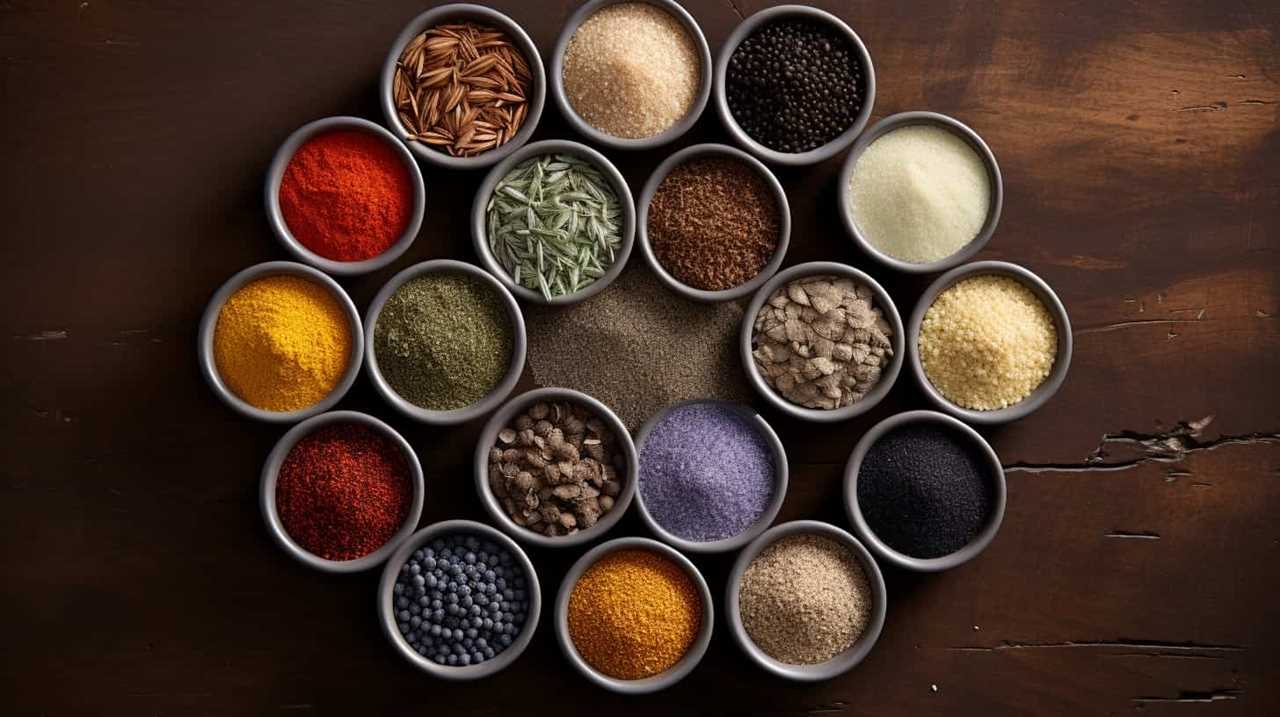
Calculating Production Costs and Profit Margins
To effectively manage our seed farming business, we regularly calculate the production costs and profit margins, ensuring that we make informed decisions for maximizing our profitability. Conducting a thorough production cost analysis allows us to identify areas where we can reduce expenses and improve efficiency. By optimizing our profit margins, we can increase our revenue and achieve financial liberation.
Here are five key reasons why calculating production costs and profit margins is essential for our seed farming business:
- It helps us understand the true cost of producing each seed, enabling us to set competitive prices.
- It allows us to identify any inefficiencies in our operations and make necessary adjustments.
- By analyzing profit margins, we can determine which seeds are most profitable and focus our resources accordingly.
- It enables us to negotiate better deals with suppliers and reduce procurement costs.
- Regularly analyzing production costs and profit margins helps us stay ahead of the competition and adapt to market changes effectively.
Staying Updated With Chia Seed Industry Trends
To stay informed about the latest trends in the chia seed industry, we regularly keep track of market developments and industry updates. By conducting thorough chia seed market analysis and monitoring chia seed consumption trends, we ensure that we are always ahead of the curve.
To give you a glimpse of the current state of the chia seed industry, here is a table showcasing some key trends and statistics:
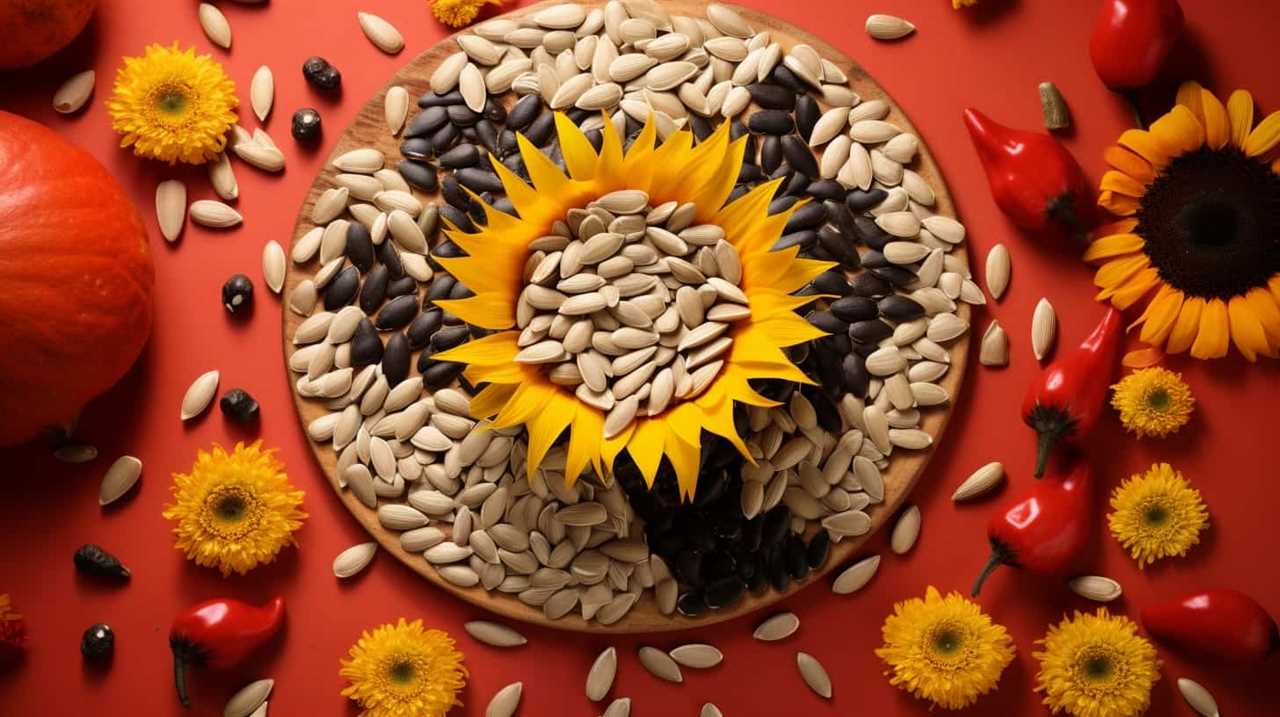
| Trend | Impact |
|---|---|
| Increasing demand | Higher prices and profits |
| Growing health awareness | Expanded market potential |
| Rising popularity in food and beverage industry | Increased product innovation |
These trends indicate a promising future for the chia seed market. As consumers become more health-conscious and seek natural alternatives, the demand for chia seeds continues to rise. This presents an excellent opportunity for commercial seed farming, allowing farmers to capitalize on the growing market and meet the evolving needs of consumers. By staying updated with industry trends, we can adapt our farming practices and strategies to maximize profitability and success in this dynamic market.
Conclusion
In conclusion, commercial seed farming can be a profitable venture if certain key factors are considered.
By selecting the right chia seed varieties and optimizing soil conditions, farmers can enhance crop yield and profitability.
Implementing effective irrigation techniques and managing pests and diseases are crucial for success.
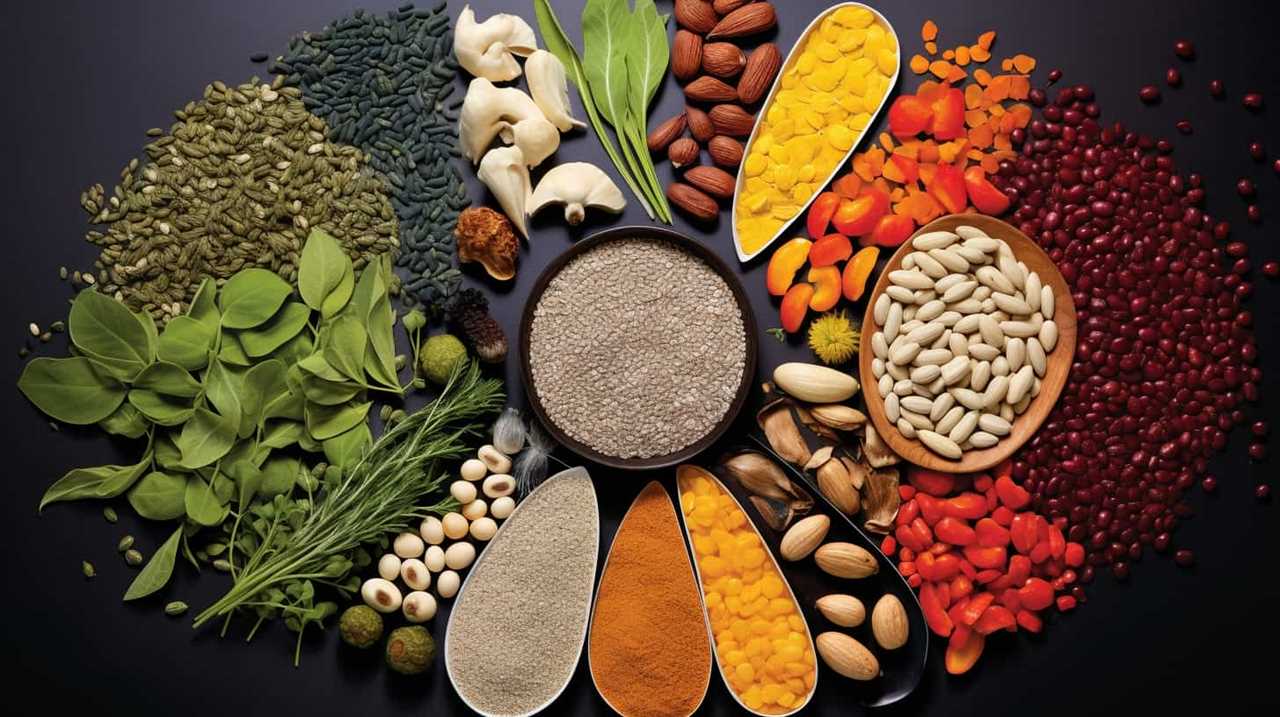
Additionally, developing a marketing strategy and staying updated with industry trends are essential for maximizing sales and staying competitive.
Interestingly, according to recent studies, the global chia seed market is projected to reach a value of $1.5 billion by 2026, highlighting the potential profitability of this industry.
Hi, I’m Sarah. I write for Turtle Tree Seeds, a news blog that loves food – all kinds of food. But especially bacon, chocolate, and veggies. We’re on a mission to show the world that you can enjoy all of those things, even kale and brussels sprouts. Because we believe that when it comes to food, there’s no such thing as guilty pleasures. Just pleasures.
I’m also a huge fan of puns (obviously).
Commercial Production of Chia Seeds
Revolutionary Approaches Transforming Chia Seed Production

Revolutionary advancements are revolutionizing the way we cultivate chia seeds! With the help of cutting-edge technology such as smart water systems, precision farming techniques, advanced seed nurturing, and robotic assistance, significant changes are taking place. Explore further to understand why enthusiasts of smart agriculture will find this information compelling.
Our sustainable farming practices ensure that chia production is not only efficient but also environmentally friendly. Through these remarkable approaches, we’re liberating chia farmers from outdated methods and empowering them to grow this valuable crop with ease and success.
Get ready to witness the future of chia seed production.
Key Takeaways
- Implementation of smart irrigation systems enabled by IoT, advanced sensors, data analytics, and real-time monitoring
- Utilization of advanced technologies and data analytics in precision farming, vertical farming, and artificial lighting for increased yield potential
- Adoption of sustainable farming practices such as regenerative agriculture, organic fertilizers, and natural pest control to enhance soil fertility and minimize environmental impact
- Importance of efficient and consistent chia seed production to ensure high-quality seeds, increase yields, reduce costs, and improve long-term sustainability.
Smart Irrigation Systems
One of the revolutionary approaches transforming chia seed production is the implementation of smart irrigation systems. These systems, enabled by the Internet of Things (IoT), are playing a vital role in conserving water and optimizing crop growth.

By integrating advanced sensors, data analytics, and real-time monitoring, smart irrigation systems are revolutionizing the way chia crops are watered. Through precision irrigation techniques, these systems ensure that water is delivered only when and where it’s needed, minimizing wastage and maximizing efficiency. This not only conserves water but also reduces energy consumption and lowers production costs.
The IoT-enabled irrigation systems provide farmers with real-time data on soil moisture levels, weather conditions, and crop water requirements, enabling them to make informed decisions and optimize irrigation schedules. These advancements in water conservation strategies are liberating farmers by empowering them with the tools to enhance productivity and sustainability in chia seed production.
Precision Farming Techniques
To implement precision farming techniques in chia seed production, we utilize advanced technologies and data analytics to optimize crop management. By integrating vertical farming methods, we can maximize space utilization and increase yield potential.
Vertical farming involves growing crops in stacked layers, utilizing artificial lighting and controlled environments to enhance productivity. This technique allows for year-round cultivation, reducing the impact of seasonal fluctuations on chia seed production.
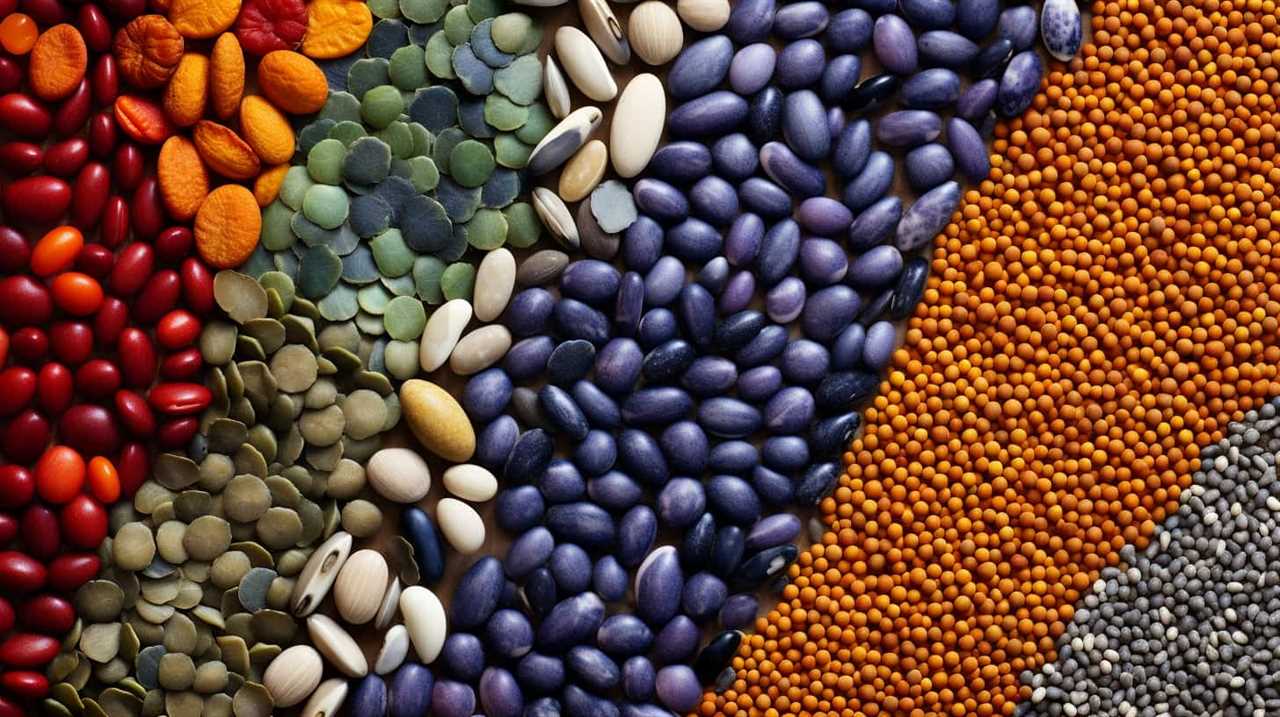
Additionally, data analytics plays a crucial role in precision farming. By collecting and analyzing data on soil composition, weather patterns, and crop health, we gain valuable insights that enable us to make informed decisions. With precise information at our fingertips, we can efficiently allocate resources, minimize waste, and ensure optimal conditions for chia seed growth.
Advanced Seed Treatment Methods
We frequently employ advanced seed treatment methods to enhance chia seed production. One such method is genetic modification, which involves altering the genetic makeup of the seeds to improve their yield and resistance to diseases. Through genetic modification, we can introduce traits that make the chia plants more adaptable to different environments, leading to increased productivity.
Another method we utilize is vertical farming, which involves growing chia plants in vertically stacked layers. This allows for maximized space utilization and efficient use of resources such as water and light.
Automated Harvesting and Processing
Our team has embraced automated harvesting and processing as an innovative approach to further revolutionize chia seed production. By implementing advanced technologies, we’re able to improve efficiency, reduce costs, and enhance the quality of our chia seeds.
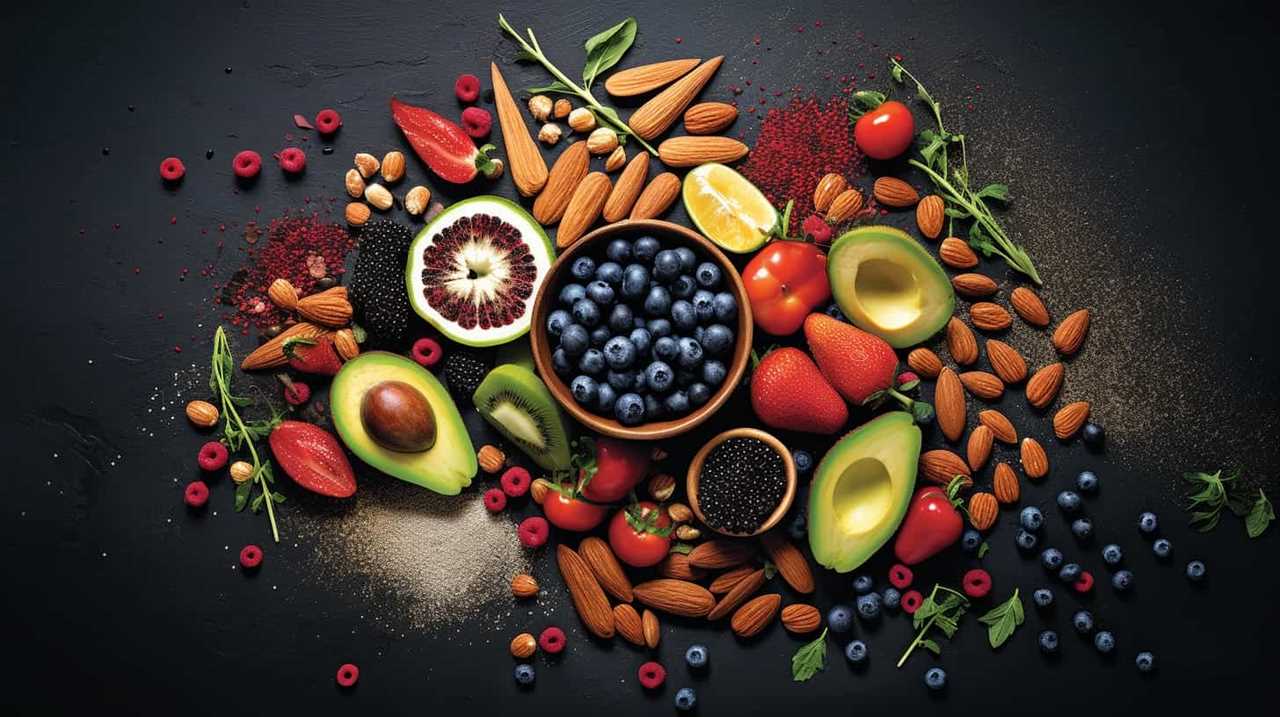
Here are three key aspects of our automated system:
- Automated Seed Sorting: We employ cutting-edge machinery that utilizes computer vision and machine learning algorithms to sort chia seeds based on their size, color, and purity. This ensures that only the highest quality seeds are used for further processing.
- Robotic Seed Packaging: Our automated packaging system eliminates human error and ensures consistent and precise packaging of chia seeds. Robots handle the entire packaging process, from filling and weighing to sealing and labeling, with utmost accuracy.
- Data-driven Optimization: Our automated system collects real-time data on various parameters such as yield, quality, and processing time. This data is analyzed to identify any inefficiencies or bottlenecks in the production process, allowing us to continuously optimize and improve our operations.
With automated harvesting and processing, we’re able to produce superior chia seeds efficiently and consistently, meeting the demands of our liberated audience.
Sustainable Chia Farming Practices
Implementing sustainable farming practices is essential for revolutionizing chia seed production. Regenerative agriculture and prioritizing soil health are key components of sustainable chia farming.
By adopting regenerative agriculture techniques, such as cover cropping and crop rotation, farmers can improve soil fertility, increase water retention, and reduce erosion. These practices also enhance the biodiversity of the surrounding ecosystem, promoting a balanced and resilient environment.
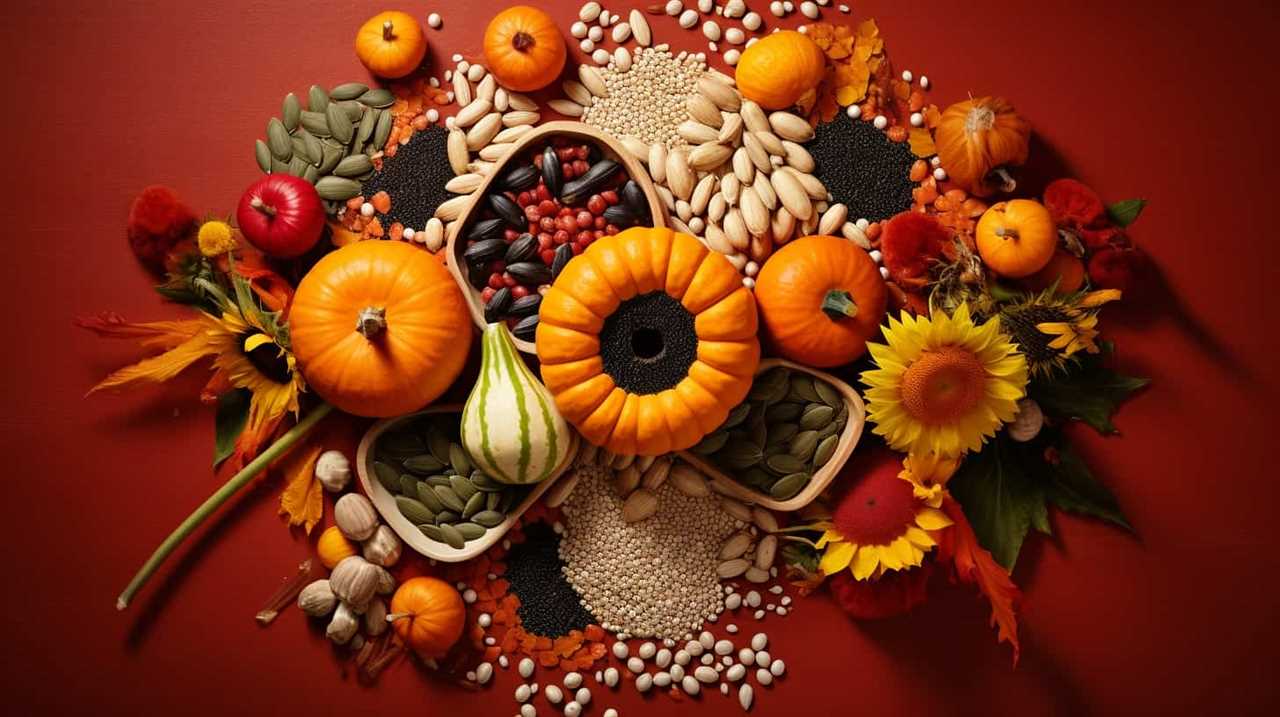
Additionally, focusing on soil health through the use of organic fertilizers and minimizing chemical inputs helps maintain a healthy microbial population and nutrient-rich soil. This contributes to improved plant growth, higher yields, and better crop quality.
Conclusion
In conclusion, the revolutionary approaches discussed in this article have transformed chia seed production. The implementation of smart irrigation systems and precision farming techniques has allowed for efficient and precise cultivation methods, resulting in higher yields and improved quality.
Advanced seed treatment methods and automated harvesting and processing have further streamlined the production process, reducing labor and increasing productivity.
By adopting sustainable farming practices, chia farmers can ensure the long-term viability of this valuable crop. Can we envision a future where chia seed production thrives, meeting the growing demand for this nutritious superfood?
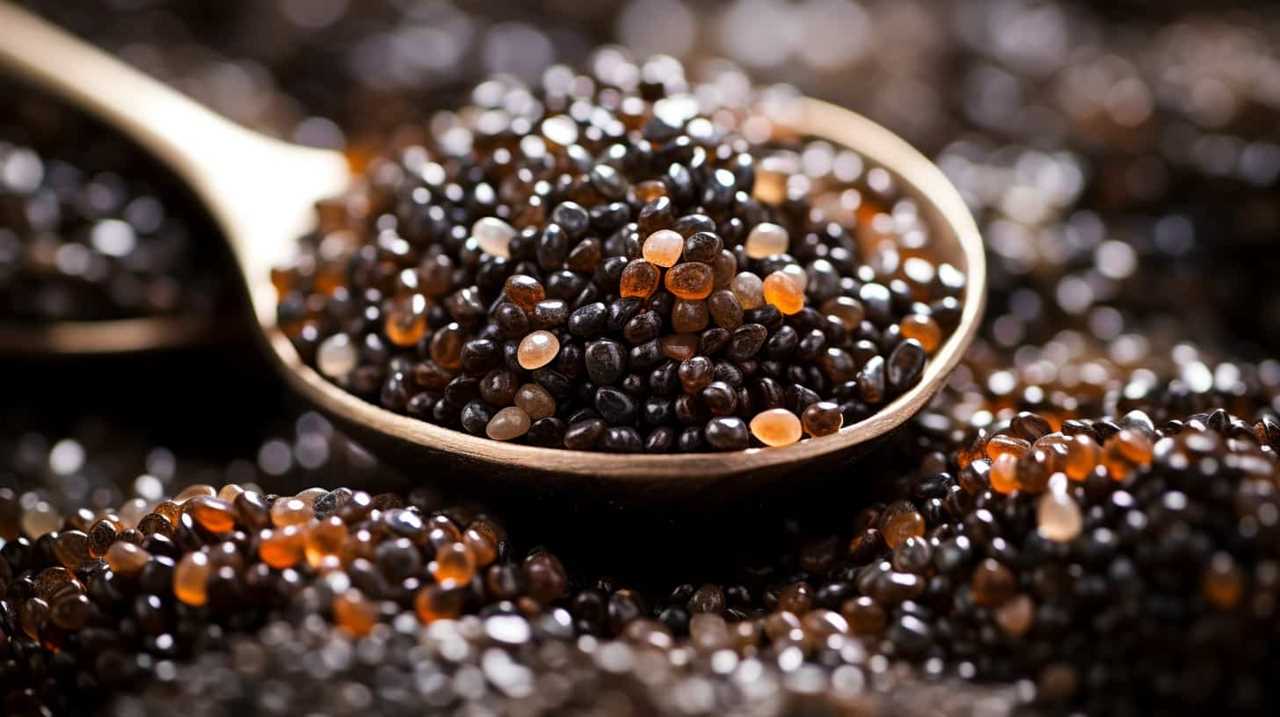
Hi, I’m Sarah. I write for Turtle Tree Seeds, a news blog that loves food – all kinds of food. But especially bacon, chocolate, and veggies. We’re on a mission to show the world that you can enjoy all of those things, even kale and brussels sprouts. Because we believe that when it comes to food, there’s no such thing as guilty pleasures. Just pleasures.
I’m also a huge fan of puns (obviously).
Commercial Production of Chia Seeds
12 Profitable Practices for Chia Seed Cultivation

Tired of dealing with the challenges of cultivating chia seeds? Look no further, as we have the ideal solution for you!
In this article, we will share with you 12 profitable practices that will revolutionize your chia seed farming. From soil preparation to marketing strategies, we have it all covered.
Forget about the endless trial and error – with our expert guidance, you’ll experience liberation from the challenges of chia seed cultivation.
Get ready to maximize your profits and elevate your farming game!

Key Takeaways
- Mulching techniques help maintain soil moisture, suppress weed growth, and regulate temperature.
- Crop rotation prevents nutrient depletion and minimizes the risk of pest infestations.
- Choosing high-quality chia seeds proven to perform well in specific climate and soil conditions is important.
- Implementing proper irrigation techniques and nutrient management is vital for healthy growth and maximizing yield.
Soil Preparation
For the optimal growth and yield of chia seeds, we begin by preparing the soil. Soil preparation is a crucial step in chia seed cultivation, as it sets the foundation for successful growth and abundant harvests.
To ensure the best results, we employ mulching techniques and crop rotation.
Mulching is an effective practice that helps maintain soil moisture, suppresses weed growth, and regulates temperature. By applying a layer of organic mulch, such as straw or wood chips, we can improve soil fertility and structure, while also reducing the need for water and herbicides.
Crop rotation is another essential technique that promotes soil health and prevents the buildup of pests and diseases. By rotating the chia crop with other plant species, we avoid depleting specific nutrients and minimize the risk of pest infestations. This practice also enhances soil structure, increases organic matter content, and improves overall soil fertility.
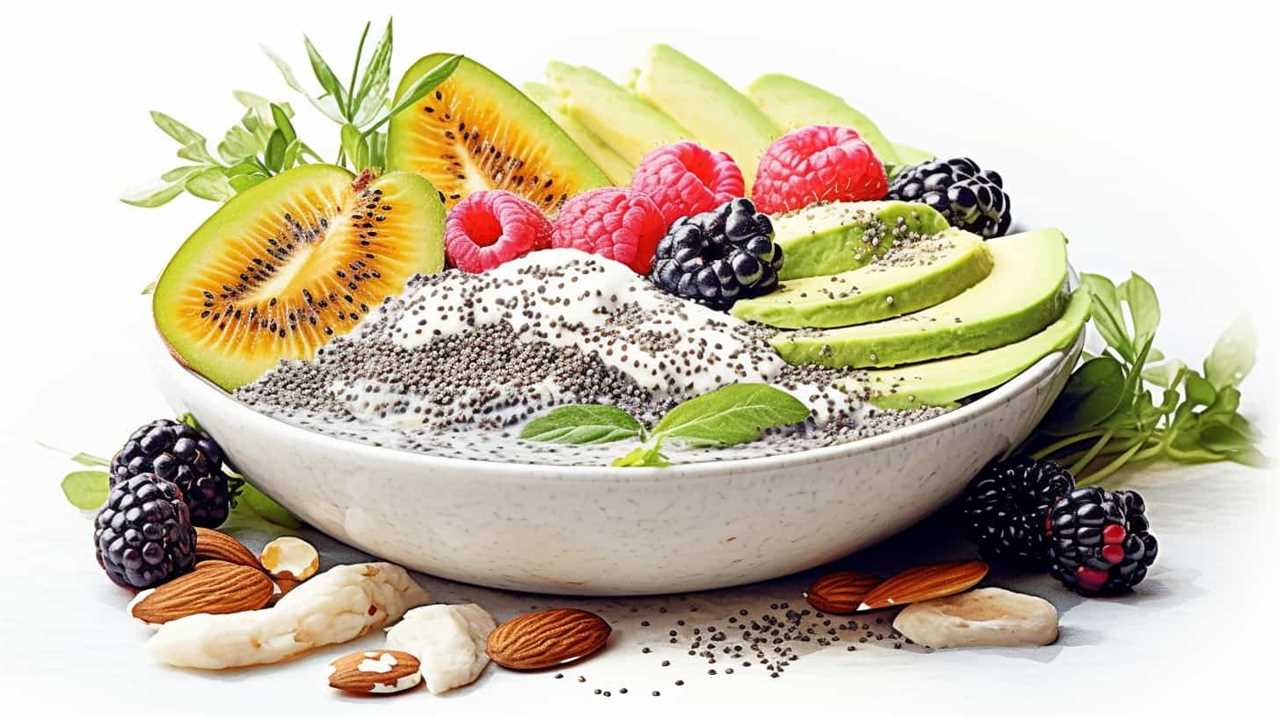
Seed Selection
Selecting high-quality seeds is a crucial step in maximizing the profitability of our chia seed cultivation. When it comes to chia seed varieties, it’s important to choose those that have been proven to perform well in our specific climate and soil conditions. This will ensure that our plants have the best chance of thriving and producing high-quality seeds.
In addition to selecting the right variety, we should also pay attention to seed germination techniques. Pre-soaking the seeds before planting can help to speed up germination and improve overall yield. It’s recommended to soak the seeds for about 30 minutes in water before planting. This will soften the seed coat and promote faster and more uniform germination.
Optimal Planting Time
When determining the optimal planting time for chia seeds, several factors must be considered.
Firstly, the best planting season for chia seeds varies depending on the geographical location and climate conditions.
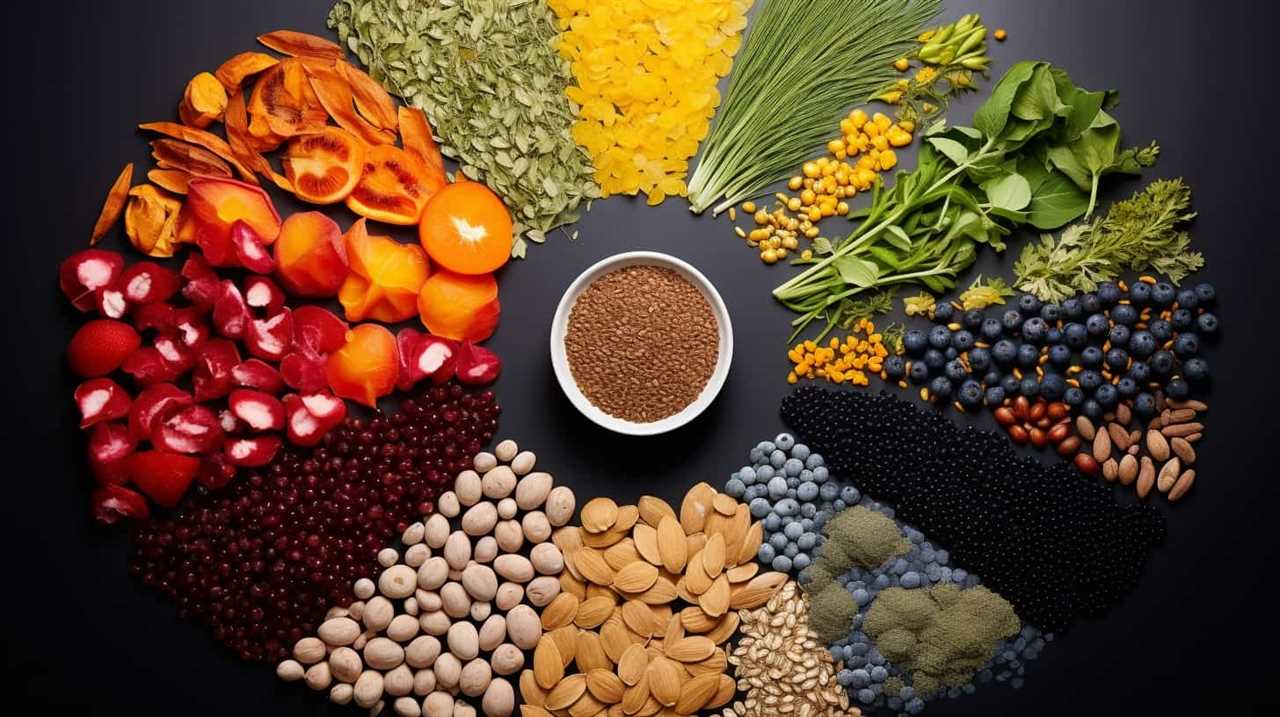
Secondly, it’s crucial to be aware of time-sensitive cultivation tips, such as avoiding late planting to prevent exposure to frost or extreme temperatures.
Best Planting Season
We have found the ideal time to plant chia seeds for maximum yield and profitability. Here are the key factors to consider when determining the best planting season:
- Climate: Chia seeds thrive in warm and dry conditions, with an optimal temperature range between 70°F and 85°F. It’s crucial to choose a time when the risk of frost has passed, as chia plants are sensitive to cold temperatures.
- Day Length: Chia plants require long daylight hours for optimal growth. Therefore, it’s advisable to plant chia seeds during the spring or summer months when the days are longer.
- Soil Moisture: Chia seeds need a well-drained soil with moderate moisture levels. It’s recommended to plant them after the rainy season, when the soil has had a chance to dry out slightly.
- Crop Rotation: To ensure the health of your chia plants and prevent disease buildup, it’s essential to follow a crop rotation schedule. Avoid planting chia seeds in the same area for consecutive years.
Time-Sensitive Cultivation Tips
After considering the key factors for determining the best planting season discussed earlier, it becomes crucial to focus on time-sensitive cultivation tips to ensure optimal planting time for chia seed cultivation.
Time-sensitive planting techniques are essential for maximizing yield and reducing the risk of crop failure. One important tip is to monitor the weather conditions closely. Chia seeds require warm soil temperatures of at least 60°F (15°C) for optimal germination. By planting when the soil has reached this temperature, you can ensure that the seeds will sprout and establish well.
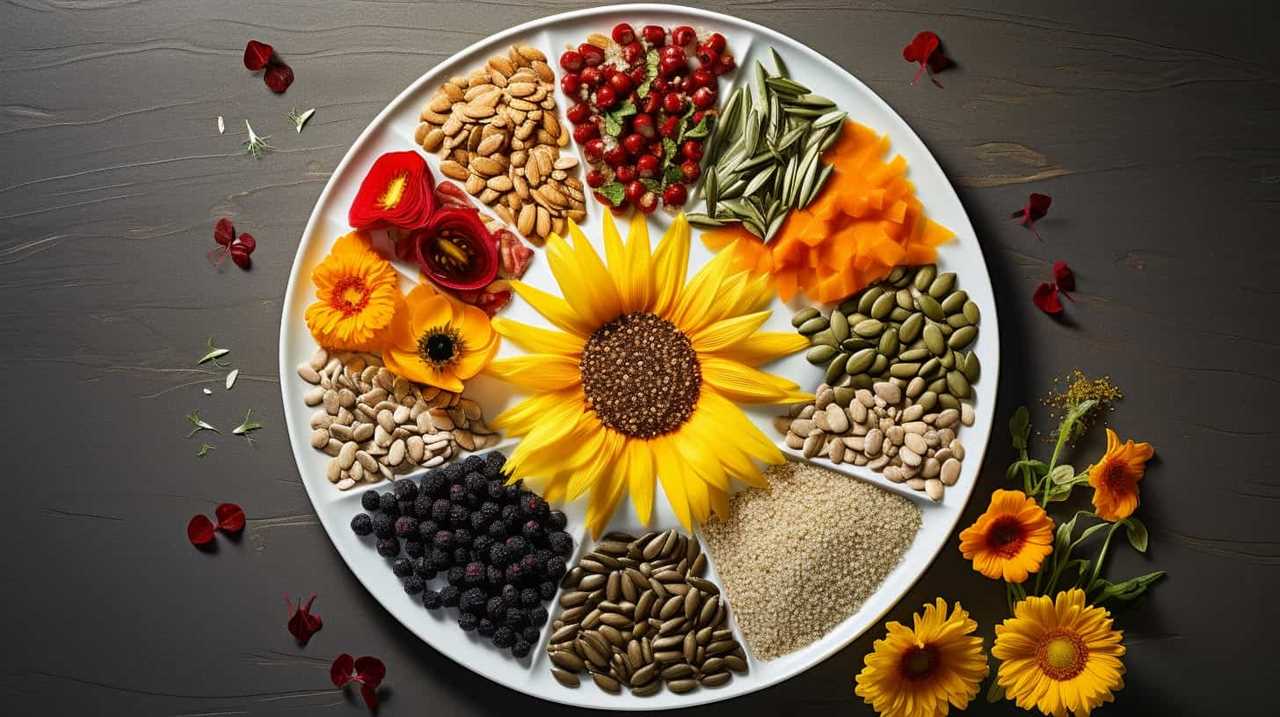
Additionally, regular maintenance practices such as weed control and soil moisture monitoring are vital to promote healthy growth and prevent competition for nutrients and water.
These time-sensitive cultivation tips are crucial for successful chia seed cultivation.
Now, let’s delve into the subsequent section about irrigation techniques.
Irrigation Techniques
To ensure optimal growth and yield, implementing efficient irrigation techniques is crucial for successful chia seed cultivation. Here are four irrigation techniques that can help you achieve the desired results:

- Drip Irrigation: This technique involves delivering water directly to the root zone of the chia plants through a network of tubes or pipes with emitters. It ensures minimal water wastage and allows for precise control over the amount of water delivered.
- Sprinkler Irrigation: With this technique, water is distributed over the chia field through sprinklers. It’s a cost-effective method that provides uniform coverage and helps prevent water stress in the plants.
- Moisture Sensors: Installing moisture sensors in the soil can help monitor the moisture levels accurately. This enables you to irrigate the chia plants only when necessary, avoiding overwatering or underwatering.
- Mulching: Applying a layer of organic mulch around the chia plants helps retain soil moisture, reducing the frequency of irrigation and conserving water resources.
Nutrient Management
When it comes to nutrient management in chia seed cultivation, there are three key points to consider: soil nutrient optimization, fertilizer application techniques, and nutrient deficiency prevention.
To ensure optimal growth and yield, it’s important to analyze the soil composition and adjust the nutrient levels accordingly.
Proper application of fertilizers, taking into account the specific nutrient requirements of chia plants, is essential for maximizing their potential.
Lastly, regular monitoring and preventative measures can help prevent nutrient deficiencies, ensuring healthy and productive chia crops.
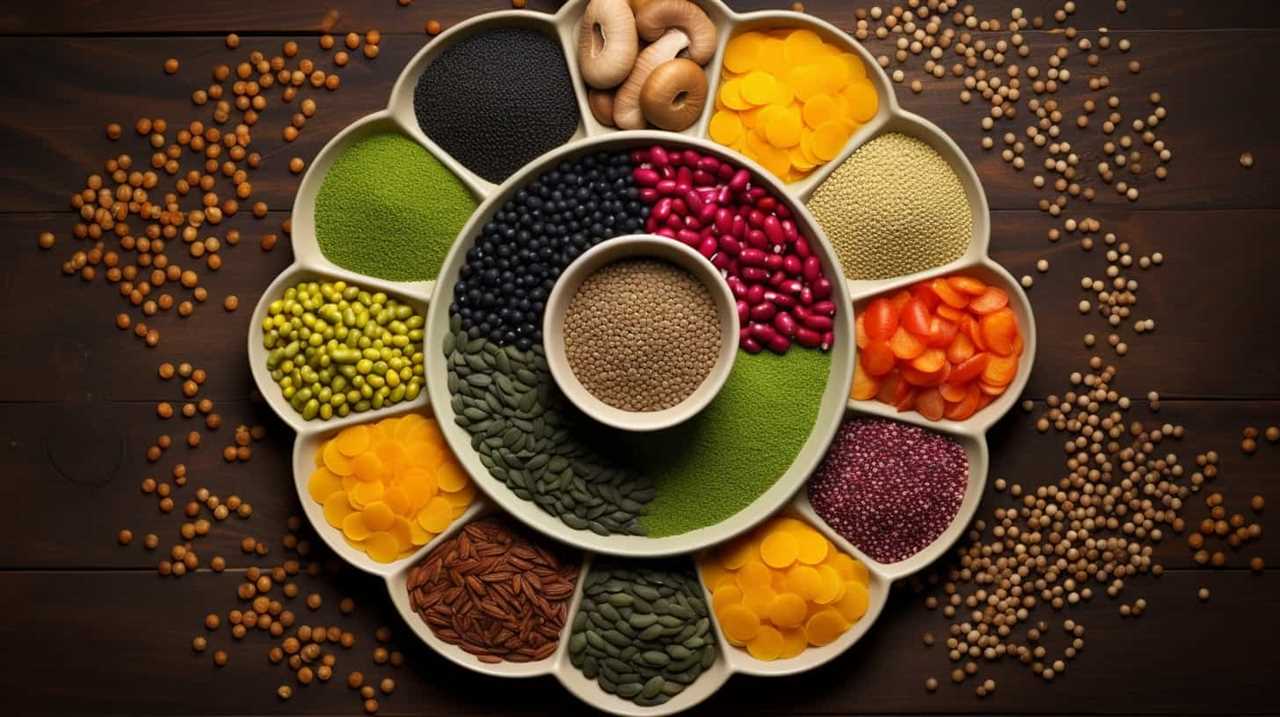
Soil Nutrient Optimization
We prioritize optimizing soil nutrients to ensure maximum chia seed cultivation profitability. To achieve this, we employ the following strategies:
- Soil Testing: Regular soil testing is crucial to assess nutrient levels and pH balance. By understanding the soil’s composition, we can make informed decisions about the appropriate fertilizers and amendments needed to optimize nutrient levels.
- Crop Rotation: Rotating chia crops with other plants helps prevent nutrient depletion and reduces the risk of pests and diseases. Different crops have varying nutrient requirements, so rotation allows the soil to replenish specific nutrients while minimizing the buildup of others.
- Organic Matter Addition: Adding organic matter, such as compost or cover crops, enhances soil structure and nutrient availability. It promotes beneficial microbial activity, which aids in nutrient cycling and improves overall soil health.
- Precision Fertilization: Applying fertilizers at the right time and in the correct amounts ensures efficient nutrient uptake by chia plants. Precision fertilization minimizes nutrient wastage, reduces environmental impact, and maximizes yield potential.
Fertilizer Application Techniques
To optimize nutrient management in chia seed cultivation, we employ effective fertilizer application techniques. The choice of fertilizer type and application rate is crucial for achieving optimal yield and quality. Chia plants have specific nutrient requirements, and it’s important to select fertilizers that provide these essential elements. Commonly used fertilizer types for chia cultivation include nitrogen (N), phosphorus (P), and potassium (K) fertilizers, as well as micronutrient fertilizers containing elements like iron, zinc, and manganese. The application rates of these fertilizers depend on various factors, such as soil fertility, chia variety, and growth stage. It’s important to carefully calculate and apply the appropriate amount of fertilizer to avoid nutrient imbalances or wastage. By following precise fertilizer application techniques, we can ensure that chia plants receive the necessary nutrients for optimal growth and development.
In order to prevent nutrient deficiencies and promote healthy chia plants, we must implement proper nutrient deficiency prevention strategies.
Nutrient Deficiency Prevention
One important aspect of nutrient management in chia seed cultivation is implementing effective strategies to prevent nutrient deficiencies. To ensure optimal plant health and maximize yield, it’s crucial to monitor micronutrient levels and provide organic nutrient supplementation as needed. Here are four key practices for preventing nutrient deficiencies:

- Monitoring micronutrient levels: Regularly assess the levels of essential micronutrients in the soil and plant tissue through soil testing and leaf analysis. This allows for timely adjustments and targeted nutrient supplementation.
- Organic nutrient supplementation: Incorporate organic fertilizers, such as compost or manure, to provide a diverse range of essential nutrients. These organic sources not only replenish the soil but also improve its overall structure and fertility.
- Balanced fertilizer application: Apply fertilizers carefully, taking into account the specific nutrient requirements of chia plants. A balanced application ensures that all necessary nutrients are provided in the right proportions, preventing imbalances and deficiencies.
- Crop rotation: Rotate chia crops with other plant species to reduce the risk of nutrient depletion. This practice helps break pest and disease cycles, enhances soil fertility, and prevents the buildup of specific nutrient deficiencies.
Weed Control Strategies
As chia seed cultivators, we regularly employ effective weed control strategies to ensure profitable yields.
One of the most efficient techniques we use is mulching. Mulching involves covering the soil around the chia plants with a layer of organic material, such as straw or wood chips. This helps to suppress weed growth by blocking sunlight and preventing weed seeds from germinating.
Additionally, the organic mulch breaks down over time, adding nutrients to the soil and improving its overall health.
Another organic alternative we utilize is manual weeding. Although it can be labor-intensive, manually removing weeds ensures that they’re completely eradicated without the use of harmful chemicals.
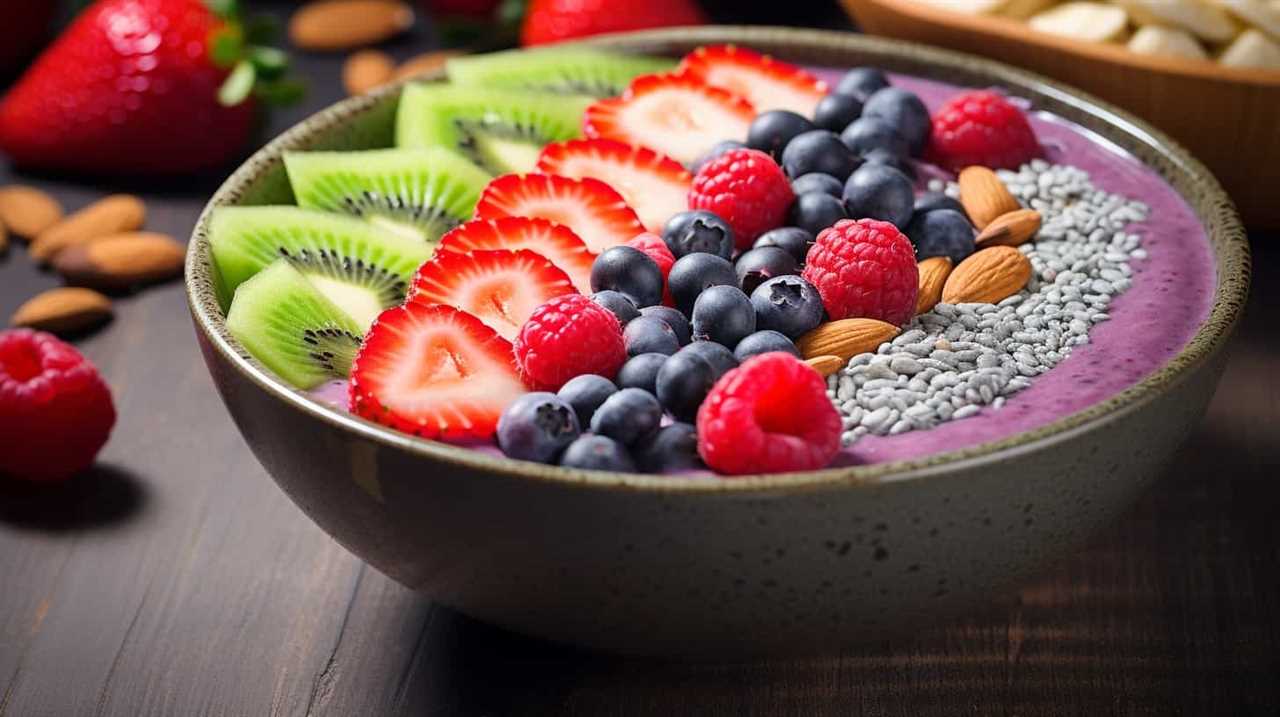
Pest and Disease Management
We continue addressing the challenges of chia seed cultivation by implementing effective pest and disease management practices. To ensure the health and productivity of our chia plants, we employ integrated pest management strategies and natural disease control methods. Here are four essential practices to consider:
- Regular scouting and monitoring: We conduct routine inspections of our chia fields to detect any signs of pest infestation or disease development. This allows us to take timely action and prevent the spread of harmful organisms.
- Crop rotation: By rotating our chia crops with other unrelated plants, we disrupt the life cycles of pests and diseases. This reduces the risk of buildup and helps maintain a healthy ecosystem within our fields.
- Biological control agents: We introduce beneficial insects, such as ladybugs and lacewings, to naturally control pest populations. These predators feed on harmful insects, reducing the need for chemical interventions.
- Proper sanitation: We maintain clean and well-maintained fields, removing any plant debris or weeds that could serve as breeding grounds for pests and diseases. This helps minimize the presence of harmful organisms and promotes a healthy growing environment for our chia plants.
Proper Harvesting Techniques
When it comes to proper harvesting techniques for chia seeds, there are two main points to consider: optimal harvest timing and post-harvest storage tips.
Timing the harvest is crucial to ensure that the seeds are mature and ready for harvest, as harvesting too early can result in low-quality seeds.
Additionally, proper post-harvest storage is essential to maintain the seeds’ quality and prevent spoilage.
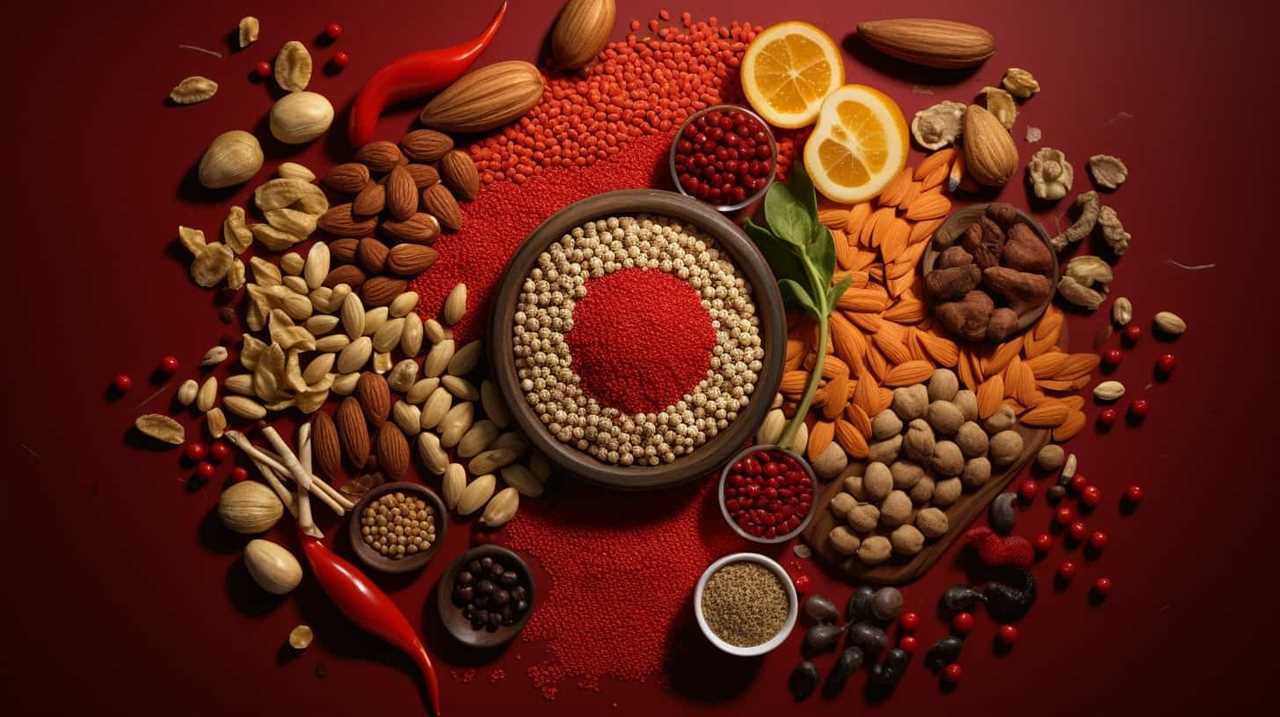
Optimal Harvest Timing
The optimal time to harvest chia seeds and employ proper harvesting techniques is essential for maximizing profitability in chia seed cultivation. To ensure the best results, it’s crucial to consider the following factors:
- Optimal moisture levels: Harvesting chia seeds when the moisture content is at the right level is crucial. Seeds that are too moist can lead to mold growth, while seeds that are too dry may result in reduced quality and lower yields. Regular monitoring of moisture levels is important to determine the ideal time for harvest.
- Quality assessment techniques: Implementing effective quality assessment techniques is vital to ensure that only high-quality chia seeds are harvested. This involves evaluating factors such as seed size, color, and texture. Additionally, chemical analysis can be conducted to assess the nutritional profile of the seeds.
- Timing based on plant maturity: Harvesting chia seeds at the appropriate stage of plant maturity is essential for achieving optimal yields. Waiting until the plants have fully matured and the seed heads have dried is crucial to ensure maximum seed viability and quality.
- Consideration of weather conditions: Weather conditions, such as excessive rain or high humidity, can impact the optimal harvest timing. It’s important to avoid harvesting during periods of heavy rain or high humidity, as this can lead to increased moisture content in the seeds and potential quality issues.
Post-Harvest Storage Tips
To ensure the longevity and quality of harvested chia seeds, it is crucial that we employ proper post-harvest storage techniques. Moisture control and packaging techniques play a vital role in preserving the nutritional value and preventing spoilage of the seeds. Here are some key tips to consider:
| Moisture Control | Packaging Techniques |
|---|---|
| Dry the seeds thoroughly before storage to prevent mold growth. | Store the seeds in airtight containers to keep out moisture and pests. |
| Maintain a moisture level of 6-8% to prevent the growth of bacteria and fungi. | Use opaque containers to protect the seeds from exposure to light, which can degrade their quality. |
| Store the seeds in a cool and dark place to maintain their freshness. | Label the containers with the harvest date for easy identification and rotation. |
Efficient Processing Methods
How can we efficiently process chia seeds to maximize profitability?
There are several key methods to consider for processing efficiency and yield optimization:
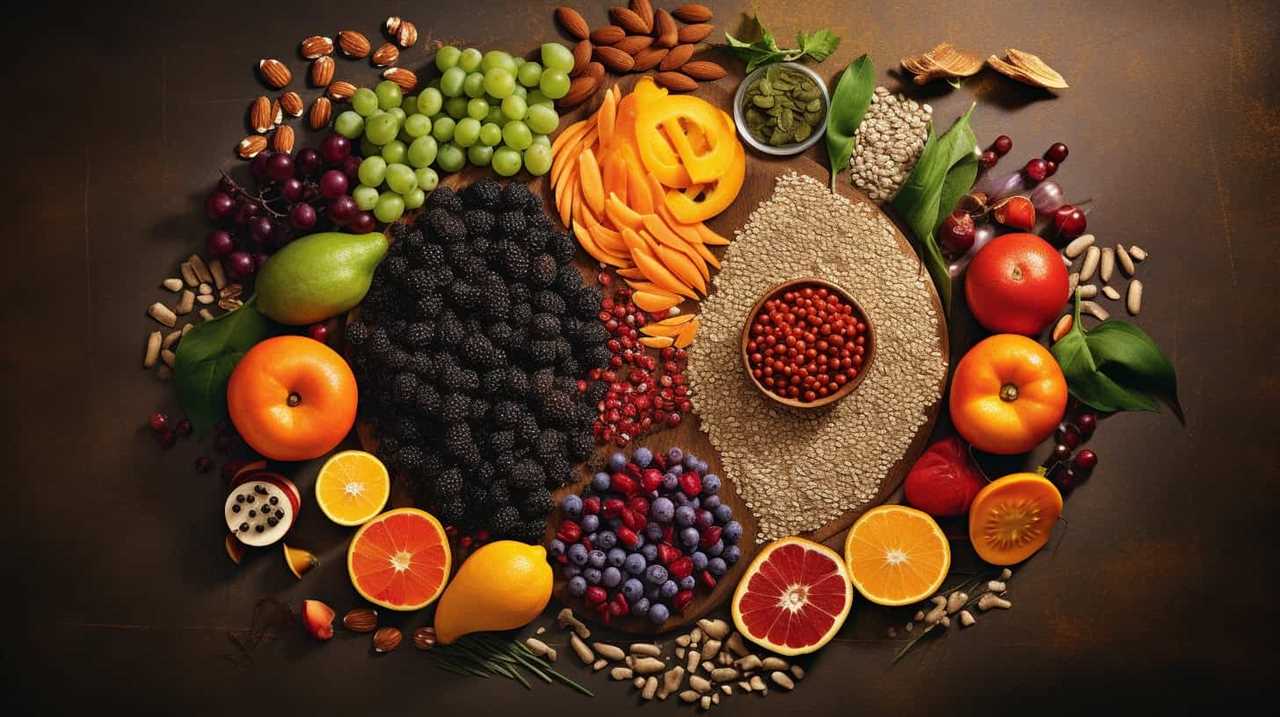
- Cleaning and sorting: Begin by removing any impurities or foreign matter from the chia seeds. Use modern cleaning equipment to achieve a high level of purity.
- Drying: Properly drying the chia seeds is crucial to prevent spoilage and ensure a longer shelf life. Use low-temperature drying methods to preserve the nutritional value of the seeds.
- Milling: Milling the chia seeds into a fine powder increases their versatility and market value. Invest in high-quality milling equipment to achieve consistent particle size and maximize yield.
- Packaging: Use airtight packaging materials to maintain the freshness and quality of the processed chia seeds. Properly labeled packaging will also help attract customers and increase sales.
Efficient processing methods are essential for maximizing profitability in chia seed cultivation.
Now, let’s explore the next topic: post-harvest storage solutions.
Post-Harvest Storage Solutions
After efficiently processing chia seeds to maximize profitability, we now turn our attention to exploring post-harvest storage solutions. Proper storage of chia seeds is crucial to maintain their quality and extend their shelf life.
One important aspect is drying methods. Chia seeds should be dried thoroughly before storage to reduce moisture content and prevent mold growth. Common drying methods include air drying, sun drying, and mechanical drying.
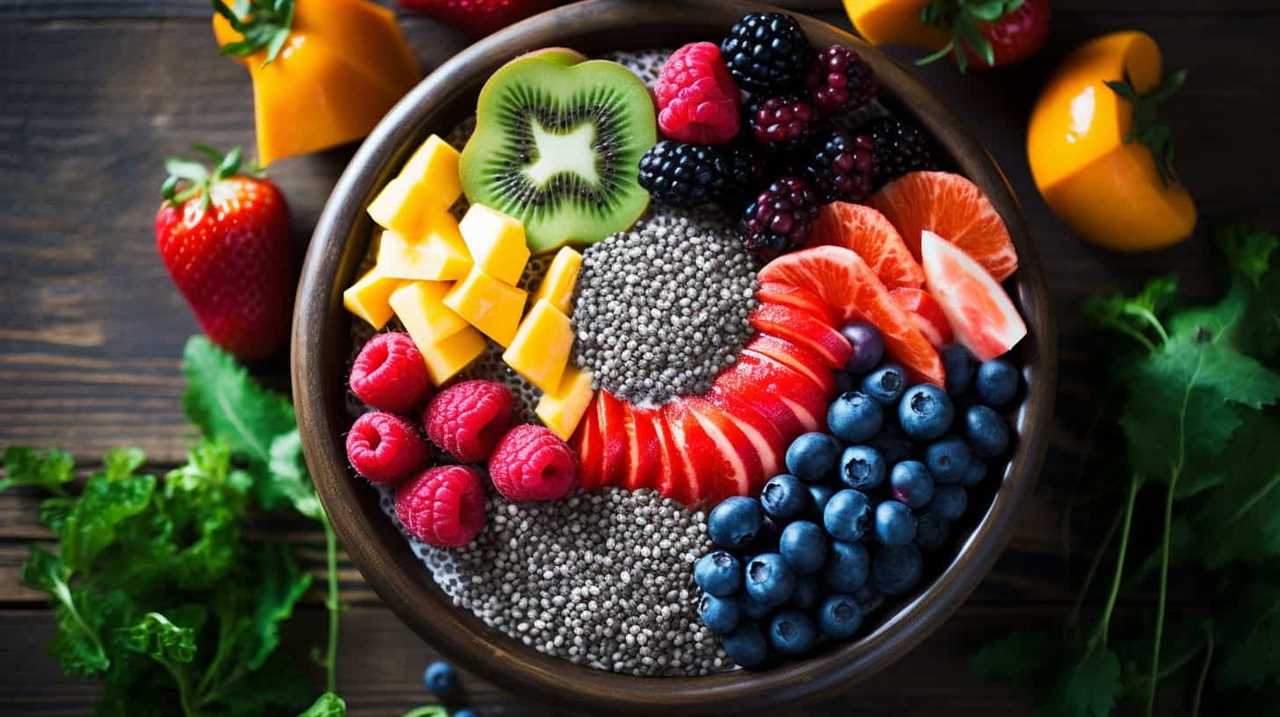
Additionally, packaging techniques play a significant role in preserving the freshness of chia seeds. It’s recommended to use airtight containers or vacuum-sealed bags to minimize exposure to air and moisture. This will help retain the nutritional value and prevent the seeds from going rancid.
Now that we’ve discussed post-harvest storage solutions, let’s move on to the next section about marketing and sales strategies.
Marketing and Sales Strategies
Now, let’s delve into our marketing and sales strategies for chia seed cultivation. To ensure a successful venture, we must implement effective sales promotion techniques and accurately identify our target audience. Here are four key strategies to consider:
- Conduct Market Research: Thoroughly analyze the market to identify potential customers and understand their needs and preferences. This will allow us to tailor our marketing efforts and product offerings accordingly.
- Develop a Strong Brand Identity: Create a compelling brand that resonates with our target audience. This includes designing a visually appealing logo, packaging, and website, as well as crafting a unique selling proposition that sets us apart from competitors.
- Implement Digital Marketing: Leverage various digital marketing channels such as social media, email marketing, and search engine optimization to reach our target audience effectively. Engage with potential customers through captivating content and interactive campaigns.
- Build Relationships and Partnerships: Collaborate with health food stores, supermarkets, and online retailers to expand distribution channels. Foster relationships with influencers and health enthusiasts who can endorse and promote our chia seed products.
Continuous Learning and Improvement
To further enhance our chia seed cultivation business, we continuously strive to learn and improve our practices. Continuous improvement is a vital aspect of our business philosophy, as we believe that lifelong learning leads to innovation and increased profitability.

We actively seek out new information, techniques, and technologies to stay ahead in the industry. Our commitment to lifelong learning drives us to attend industry conferences, participate in workshops, and collaborate with experts in the field. We also encourage our team members to engage in professional development activities, such as training programs and certifications.
Conclusion
In conclusion, implementing the 12 profitable practices for chia seed cultivation can significantly enhance productivity and profitability.
By employing effective soil preparation, selecting high-quality seeds, and optimizing planting time, farmers can lay a strong foundation for successful chia seed cultivation.
Adopting efficient irrigation techniques and managing nutrients appropriately are crucial for ensuring the healthy growth of chia plants and maximizing yield.
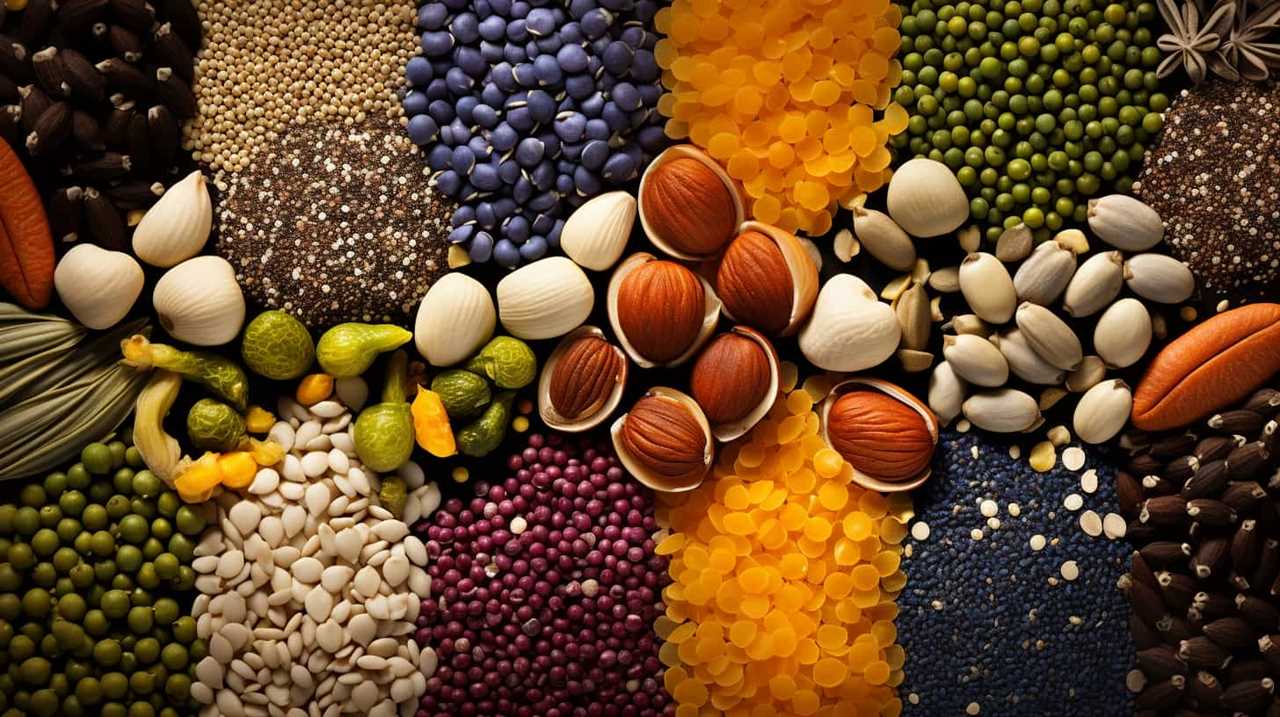
Utilizing efficient processing methods and implementing post-harvest storage solutions are essential for preserving the quality of chia seeds and preventing any potential losses.
Additionally, adopting effective marketing and sales strategies is vital for farmers to effectively promote and sell their chia seed products.
Continuous learning and improvement are also essential in staying ahead in this competitive industry.
By following these practices, farmers can experience remarkable growth and success in their chia seed cultivation ventures.
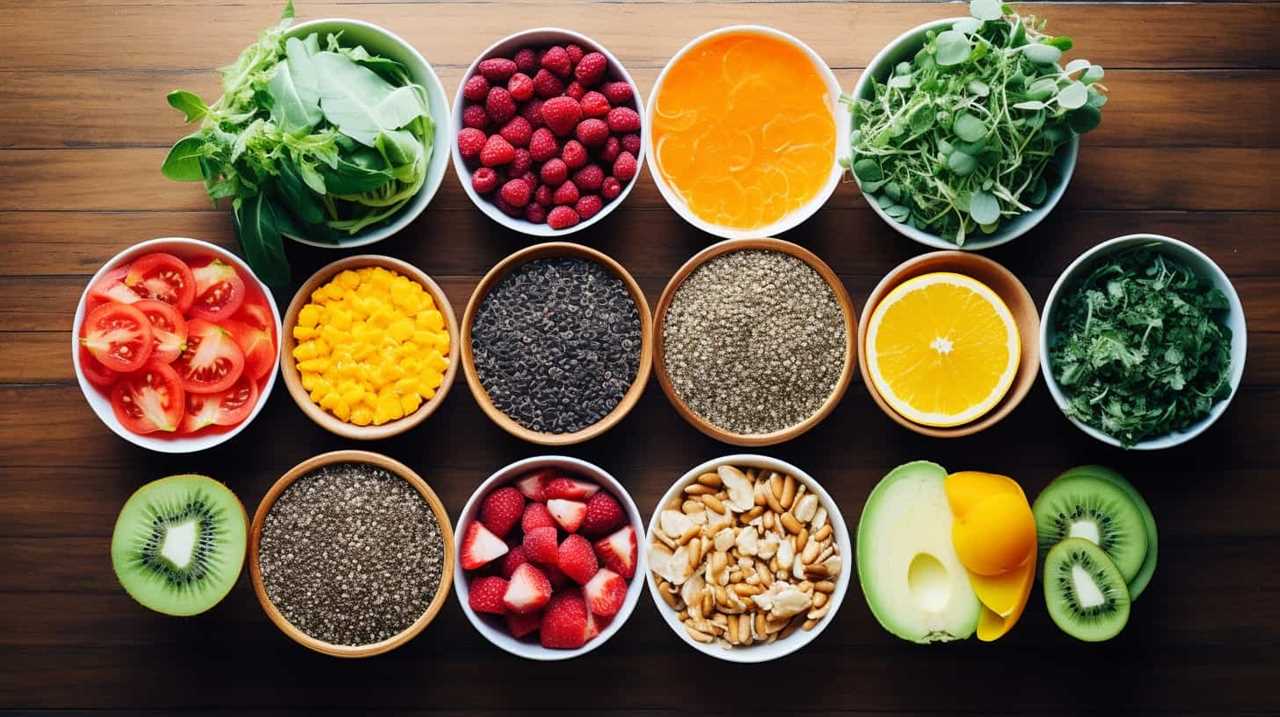
Hi, I’m Sarah. I write for Turtle Tree Seeds, a news blog that loves food – all kinds of food. But especially bacon, chocolate, and veggies. We’re on a mission to show the world that you can enjoy all of those things, even kale and brussels sprouts. Because we believe that when it comes to food, there’s no such thing as guilty pleasures. Just pleasures.
I’m also a huge fan of puns (obviously).
-
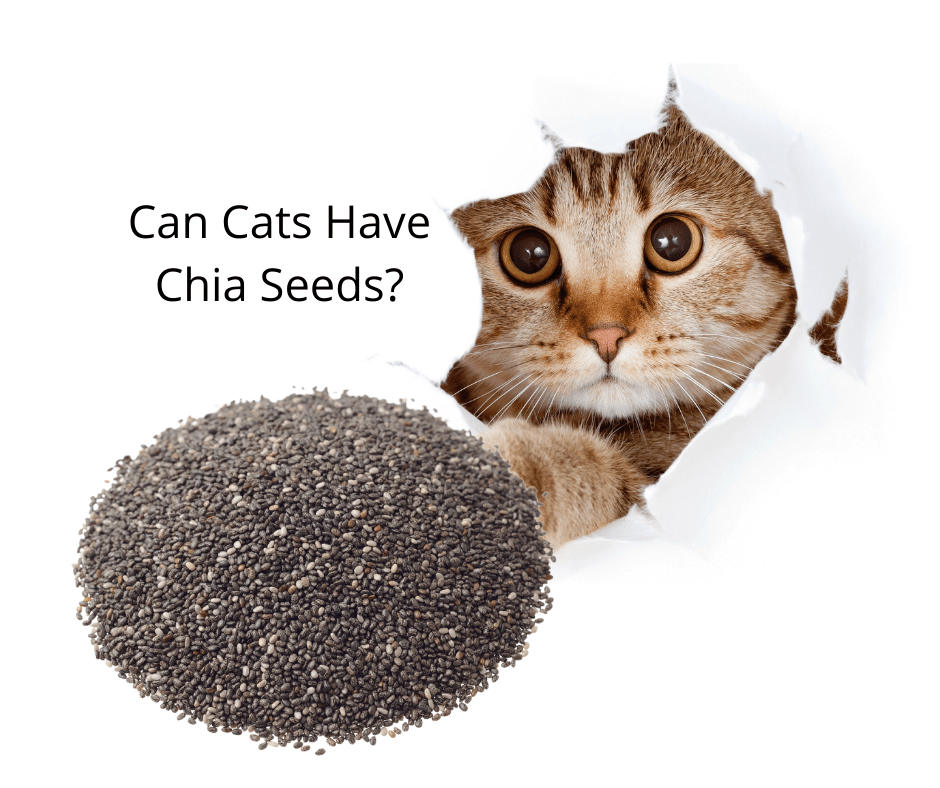
 Chia Seeds3 months ago
Chia Seeds3 months agoCan Cats Have Chia Seeds?
-

 Chia Seeds3 months ago
Chia Seeds3 months agoHow Do Chia Seeds Go Bad?
-

 Chia Seeds3 months ago
Chia Seeds3 months agoDo Chia Seeds Make You Poop?
-

 Health Risks and Allergies Related to Chia Seeds3 months ago
Health Risks and Allergies Related to Chia Seeds3 months agoWhy Do Chia Seeds Gel
-

 Chia Seeds3 months ago
Chia Seeds3 months agoHow to Use Chia Seeds For Weight Loss
-

 Chia Seeds and Digestive Health2 weeks ago
Chia Seeds and Digestive Health2 weeks agoWhy Are Chia Seeds Beneficial For Gut Health?
-
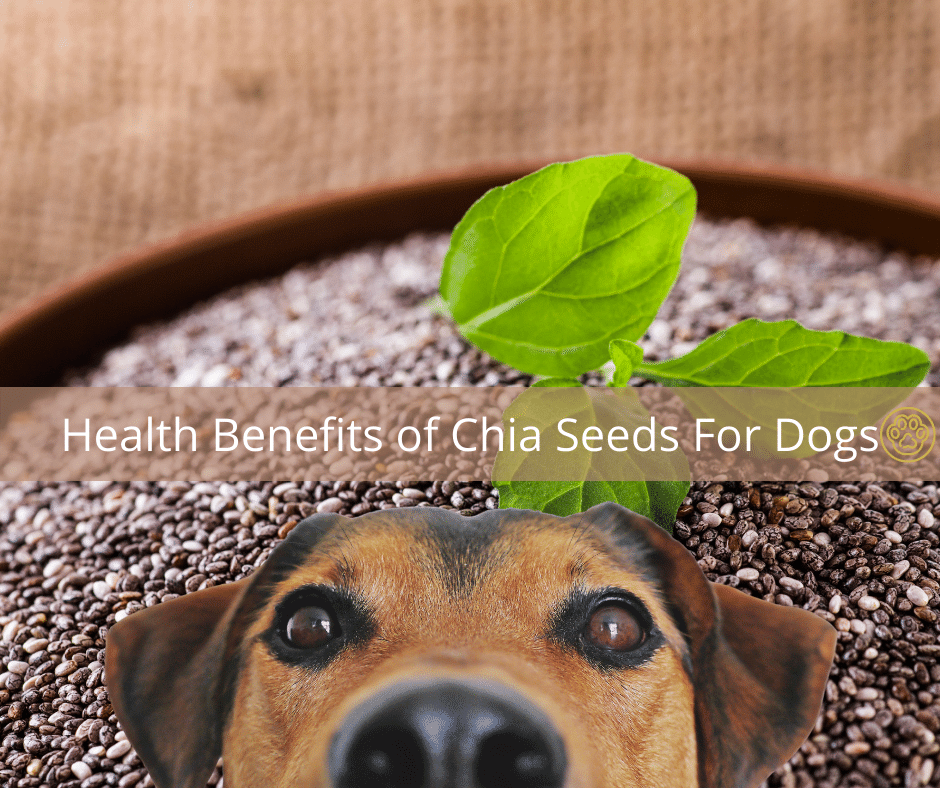
 Chia Seeds3 months ago
Chia Seeds3 months agoHealth Benefits of Chia Seeds For Dogs
-
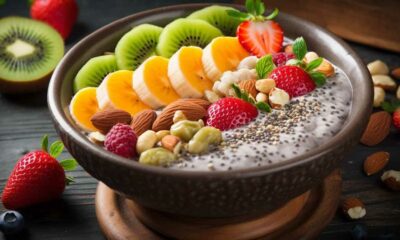
 Chia Seeds in Gluten-Free Diets2 months ago
Chia Seeds in Gluten-Free Diets2 months agoYour Dependable Guide: Chia as a Gluten Substitute





